Want to Keep Deer From Eating Your Garden? Here's What to Plant
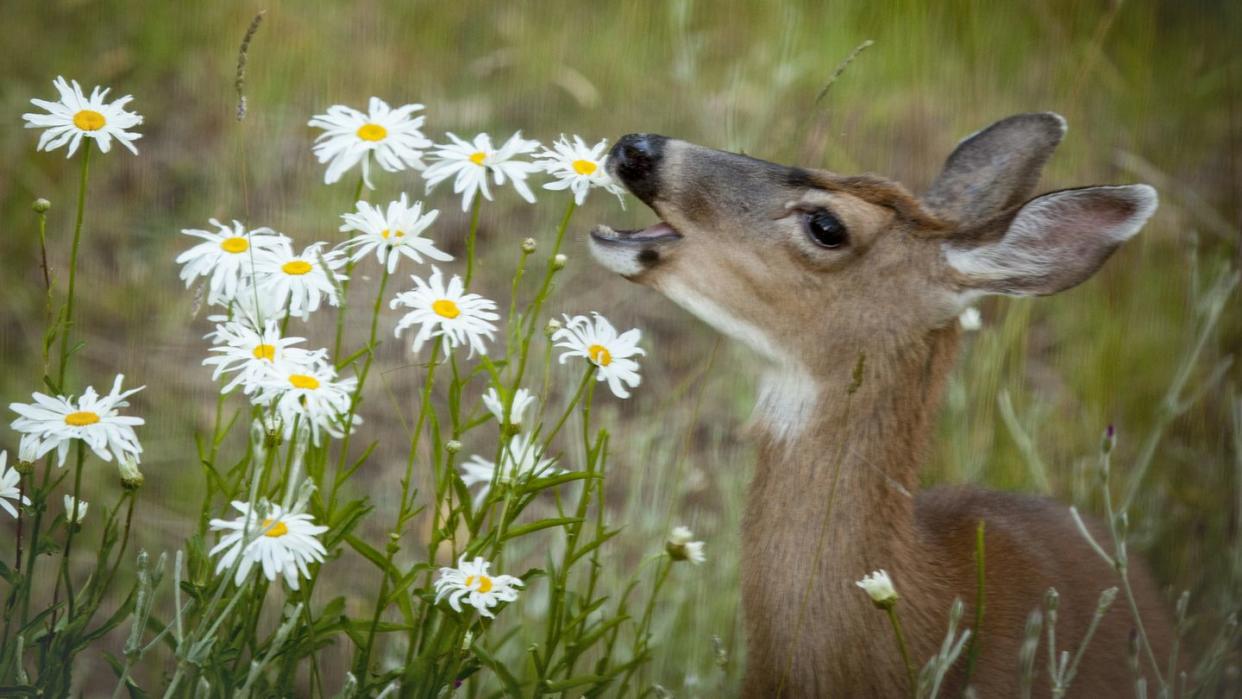
"Hearst Magazines and Yahoo may earn commission or revenue on some items through these links."
What’s cute? Bambi visiting the backyard! What’s not so cute? Bambi chomping the heads off the spring flowers you just planted and devouring your perennials and shrubs. You can apply deer repellent to your plants, but they don’t work all the time and you have to reapply it after it rains. Sometimes deer get used to the taste and keep chowing down anyway. Opting for deer-resistant plants is an easier and more foolproof way to make sure your garden doesn’t get eaten up.
Deer definitely have favorite foods, such as arborvitae, hostas, daylilies, and azaleas. But the truth is they’ll eat almost anything in your garden if they’re hungry enough—and just like humans, they’ll try anything once, according to Dimitri Gatanas, owner of Urban Garden Center in New York. In general, they don’t like plants that are highly fragrant, fuzzy, or have an otherwise unpleasant texture. “The best way to keep deer from eating your plants is to create a sort of barrier around your favorable plants with a variety that may not like as much,” Gatanas explains. “For example, I have my hydrangeas planted behind a border of low boxwoods.” He also recommends blocking deer out as much as you can, either with spiky varieties like barberry or holly bushes or with a thick row of arborvitae. Deer fencing is okay, Gatanas says, and it definitely works, but it’s not his personal preference because it distracts from the beautiful garden you’ve spent so much time on.
Before you do a victory dance, it’s also important to note that while many plants are deer resistant—which means deer are less likely to eat them—there’s no such thing as a deerproof plant. If you have enough deer in your neighborhood, they’ve established common pathways through your property, and if it’s been a particularly rough winter, you’re probably going to have some damage from these visitors. It’s just nature! So do your best to plant deer-resistant types of plants and protect your favorites with a natural barrier. Then try repellent as an additional measure, and hope for the best. Ahead, we’ve listed the best landscape plants to give your garden a fighting chance against deer and other uninvited guests.
For more spring gardening advice:
Additional copy by Arricca Elin-Sansone.
Pampas Grass
Ideal for adding both privacy and a height statement to your garden, pampas grass won't be gobbled up by pesky deer this spring and summer. This plant looks great as it dries out and dies when the weather gets cold, just be sure to cut the dead stalks ahead of every new growing season.
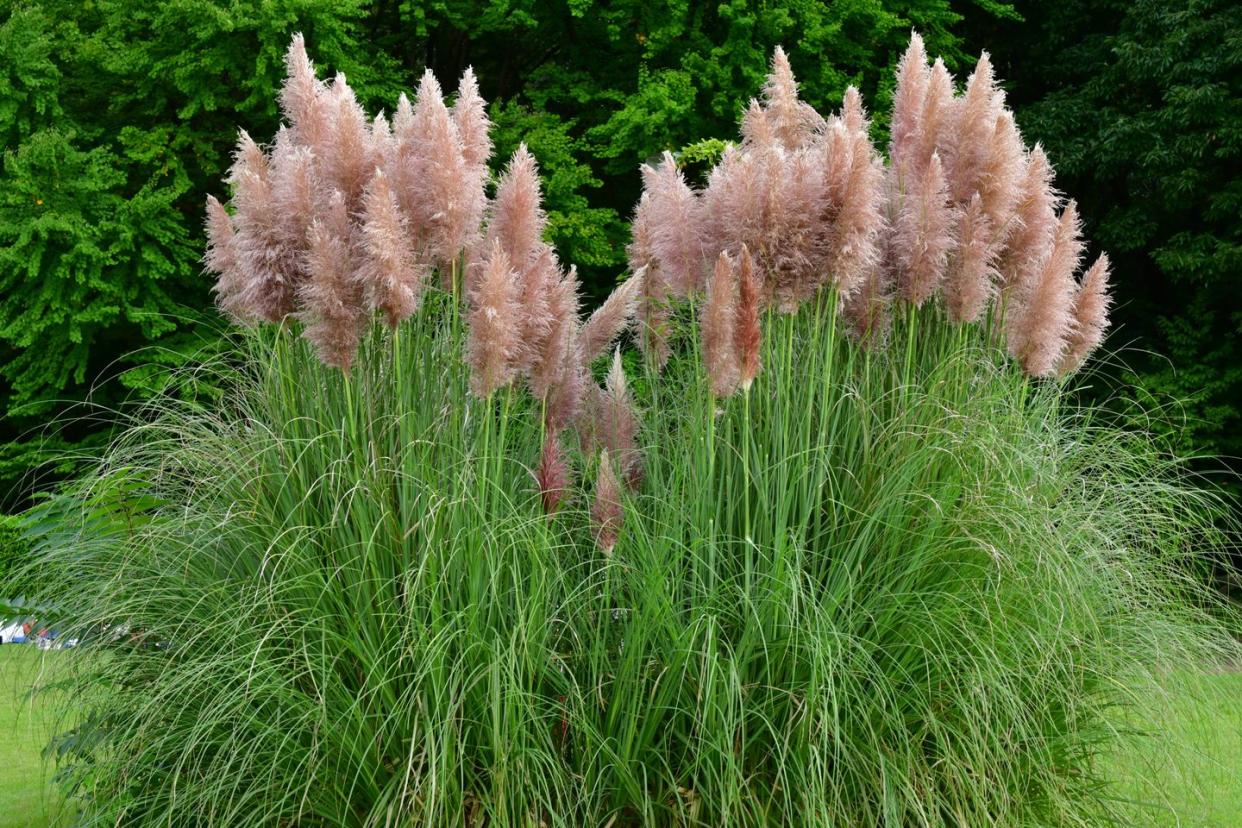
Garden Sage
Like many fragrant herbs, deer won't go near them. This is a great addition to any garden or vegetable patch. We recommend planting this herb near other plants that deer may love to try and deter them.
Related Story: The Best Indoor Herb Gardens
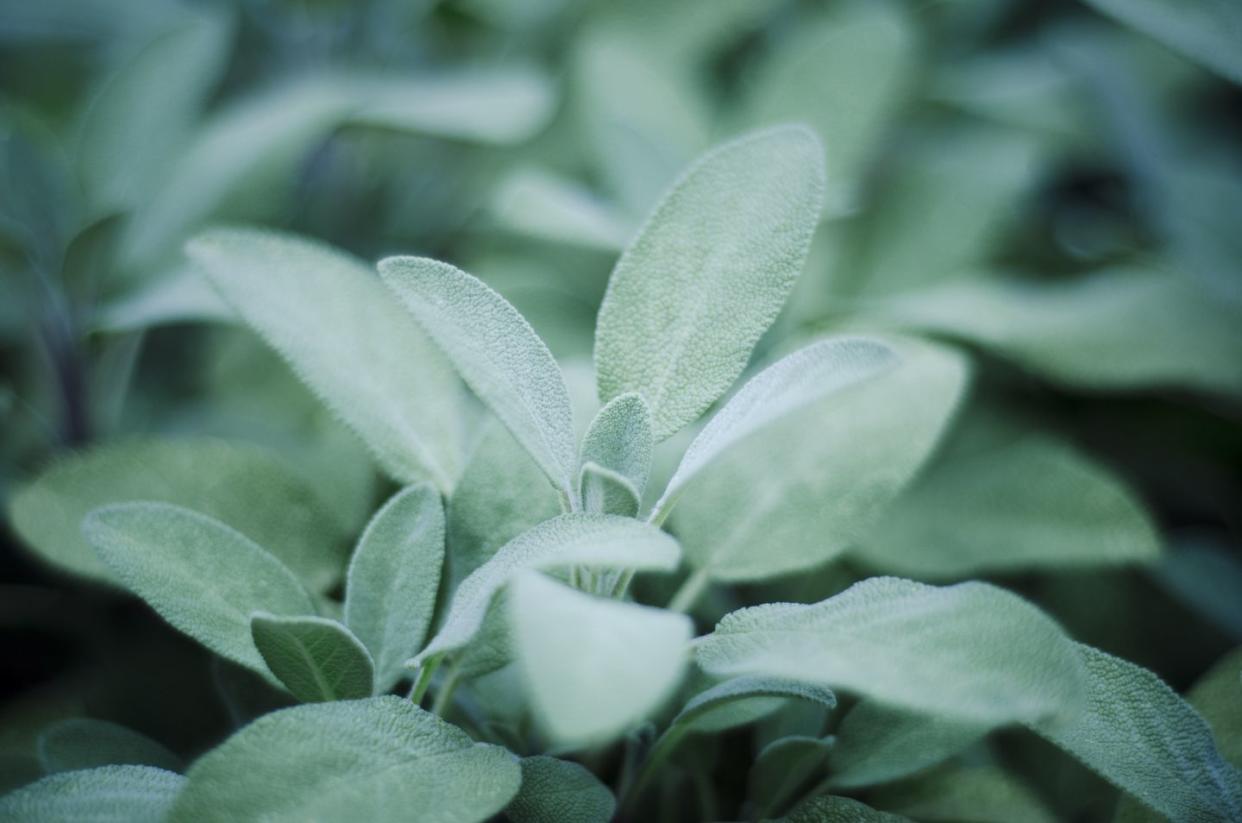
Forget-Me-Not
Dainty and sweet, Forget-Me-Not flowers offer a bold, blue hue to any landscaping bed. These plants are one of the first to bloom each spring, giving your garden some new life post winter frosts.
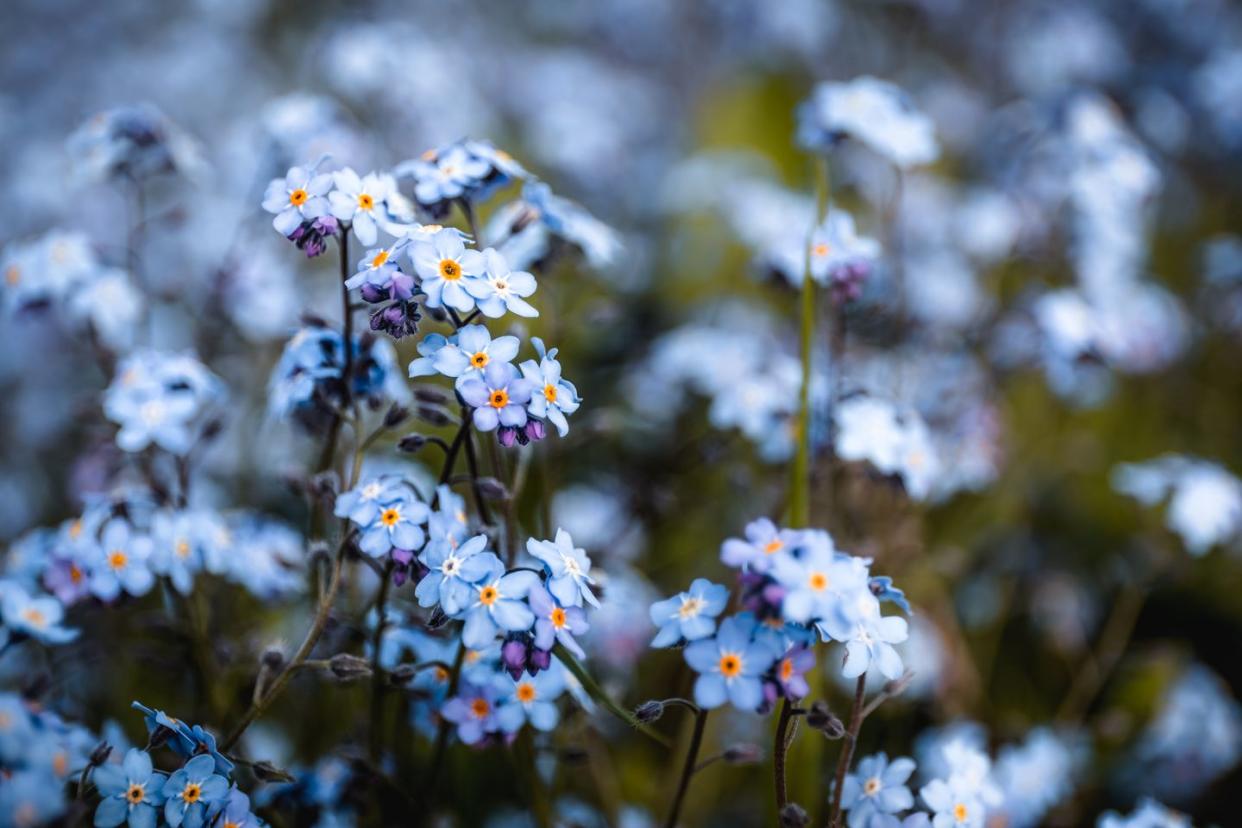
Buttercups
Despite their alluring names, deer can't stand Buttercup blooms. These are a great wildflower for natural and rewilding landscape ideas. Plant in the fall for a gorgeous yellow wash come spring.
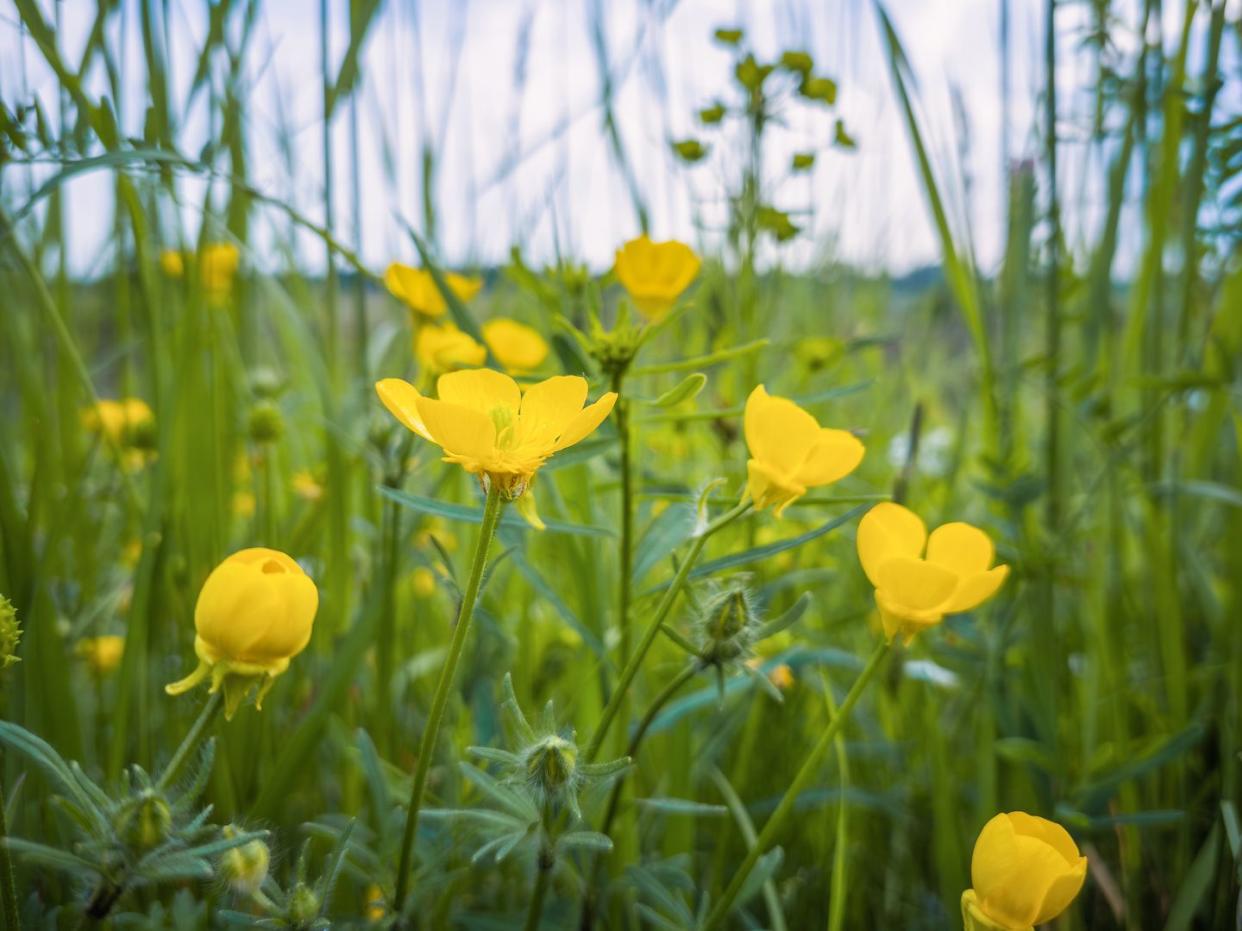
Thyme
Home-grown herbs are one of the easiest ways to upgrade your home cooking, but deers are often attracted to edible plants. However, delicious Thyme is an exception. Plant in and around your vegetable patches to deter curious critters.
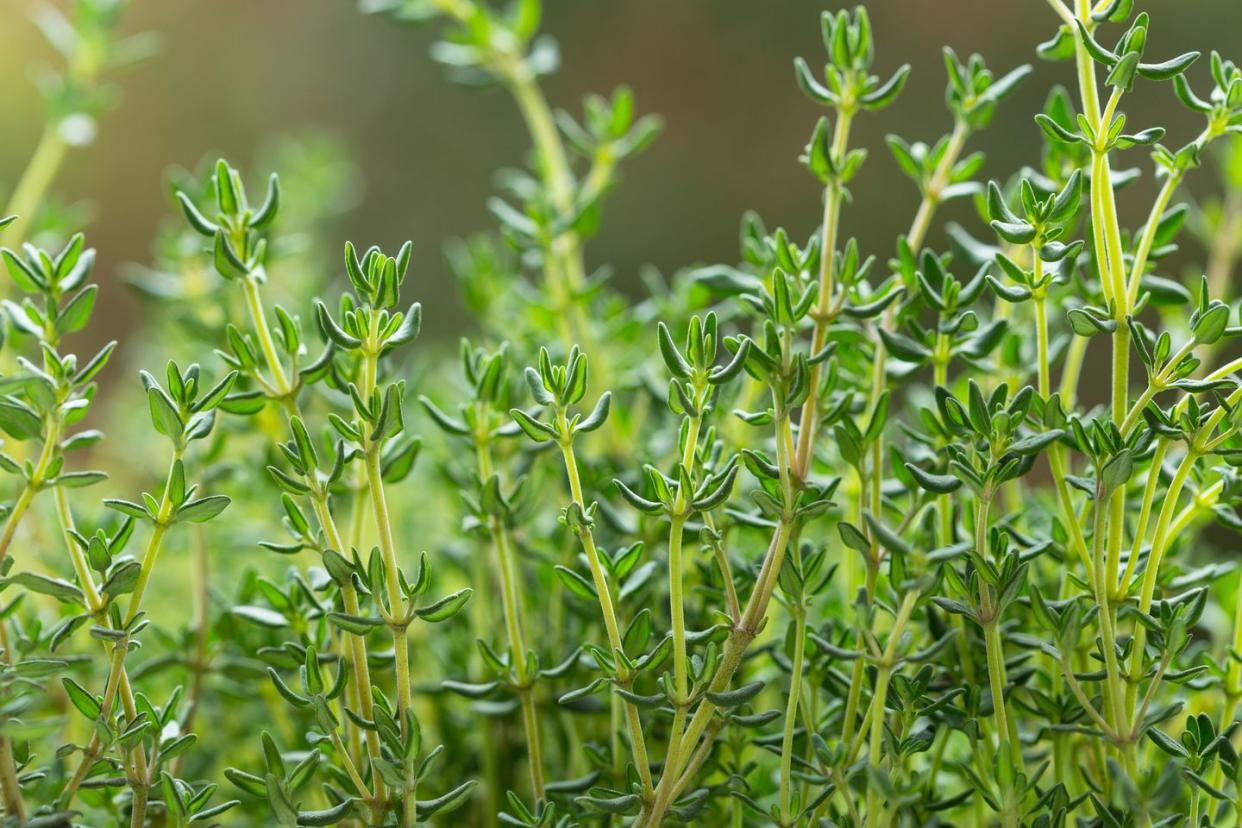
Larkspur
Highly poisonous for all creatures, including humans, these plants will keep deer far away from your beloved garden. Available in both light and dark hues ranging from sky blue to a rich purple, plant in groups for an eye-catching landscape.
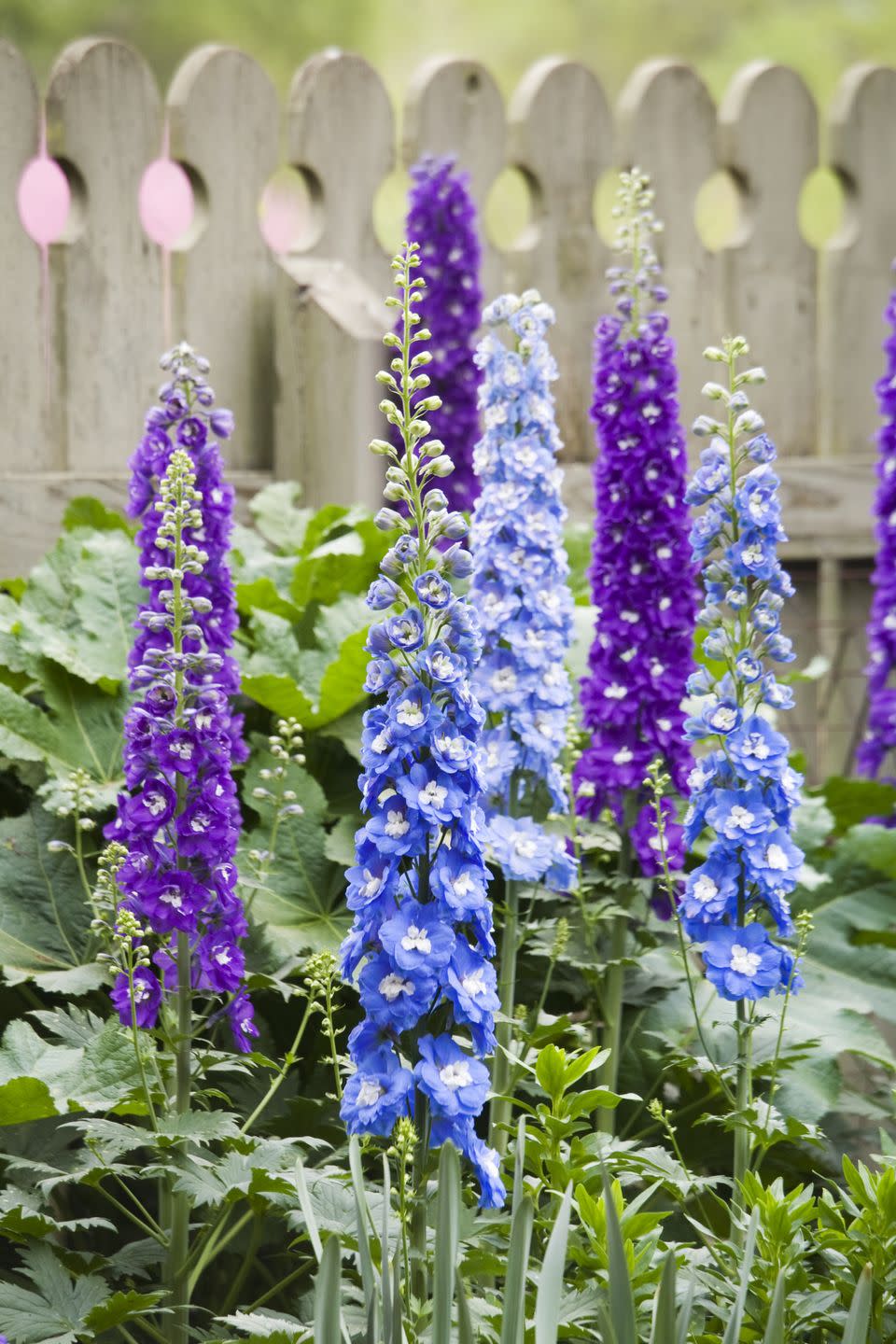
Meadow Rue
Tall and striking, Meadow Rue plants are a part of the Buttercup family, so deer won't snack on these either. These plants are great if you're in need of some height in your garden, plus, they offer a sweet butter-y yellow hue.
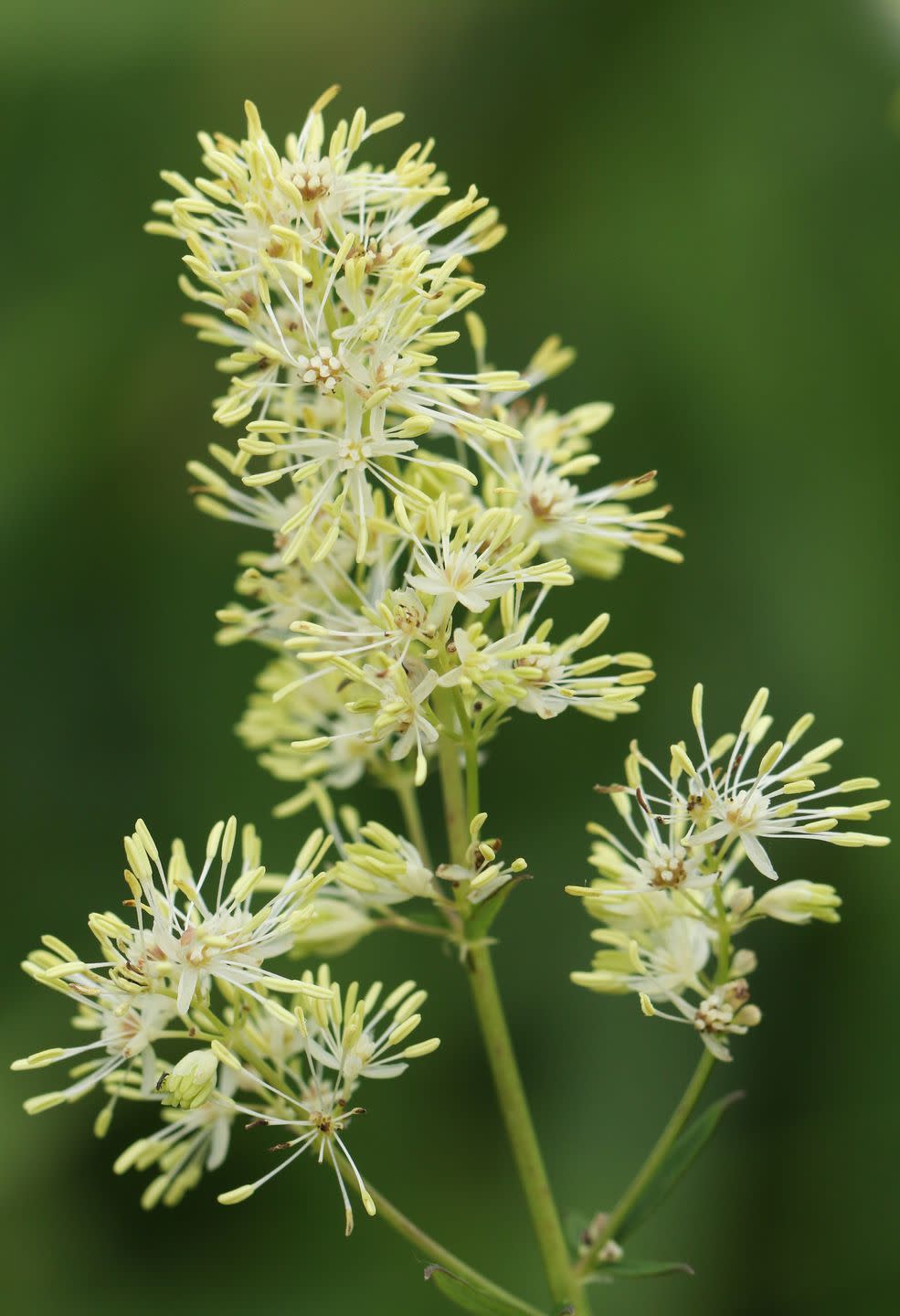
Monkshood
Also known as Aconite or Wolfsbane, Monkshood is a highly toxic and poisonous plant for all humans and animals. What it lacks in a friendly nature, it makes up for with its vibrant purple coloring. Because it's so harmful to animals, this plant should be used sparingly.
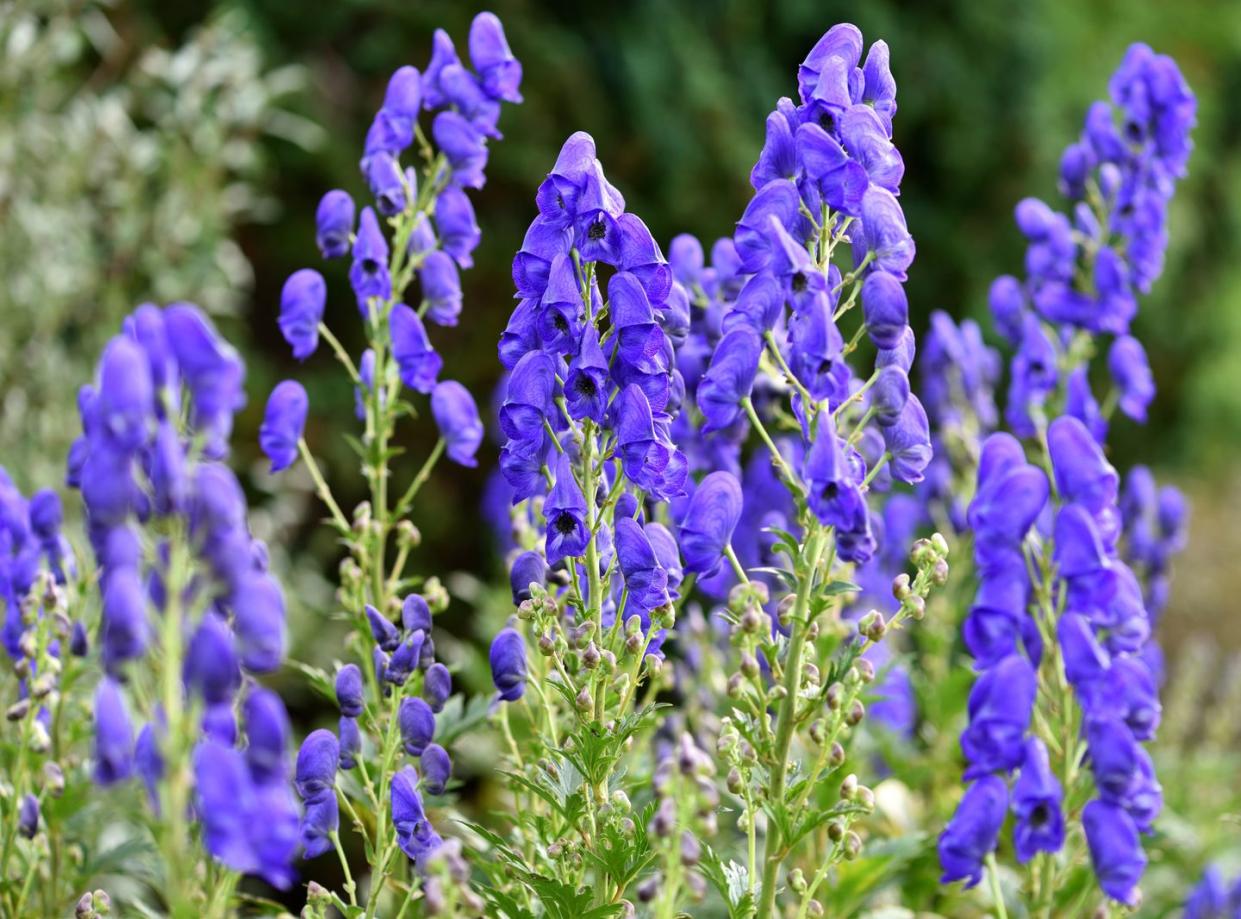
Blue Fescue
A beautiful ornamental grass, Blue Fescue is great for adding depth and visual interest to your ground cover. Their silvery, blue fronds thrive best in full sun environments.
Related Story: The Best Ornamental Grasses
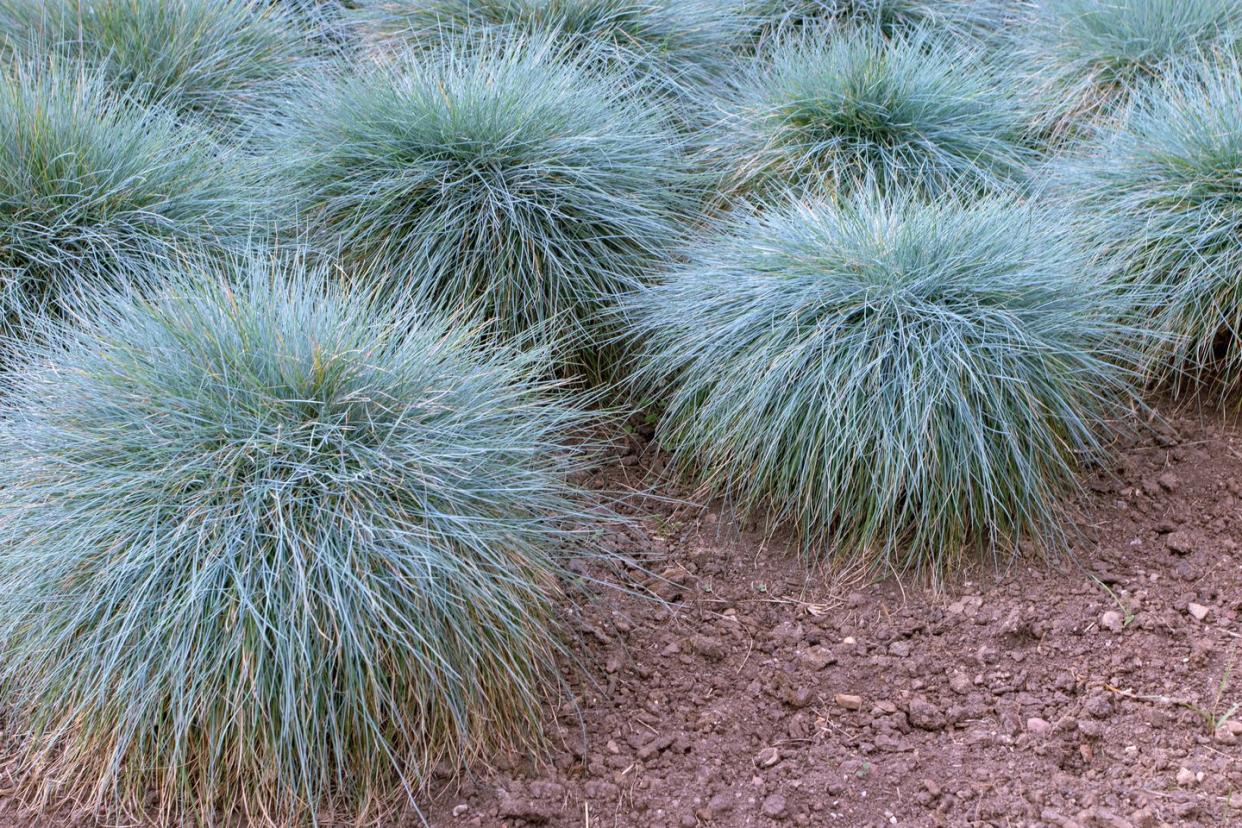
American Holly
Often associated with Christmastime, Holly plants are an evergreen that boasts its striking red berries (they're harmful for humans, don't eat them) all winter long. Their spiky leaves also deter deer, which makes them ideal for outdoor holiday decorating.
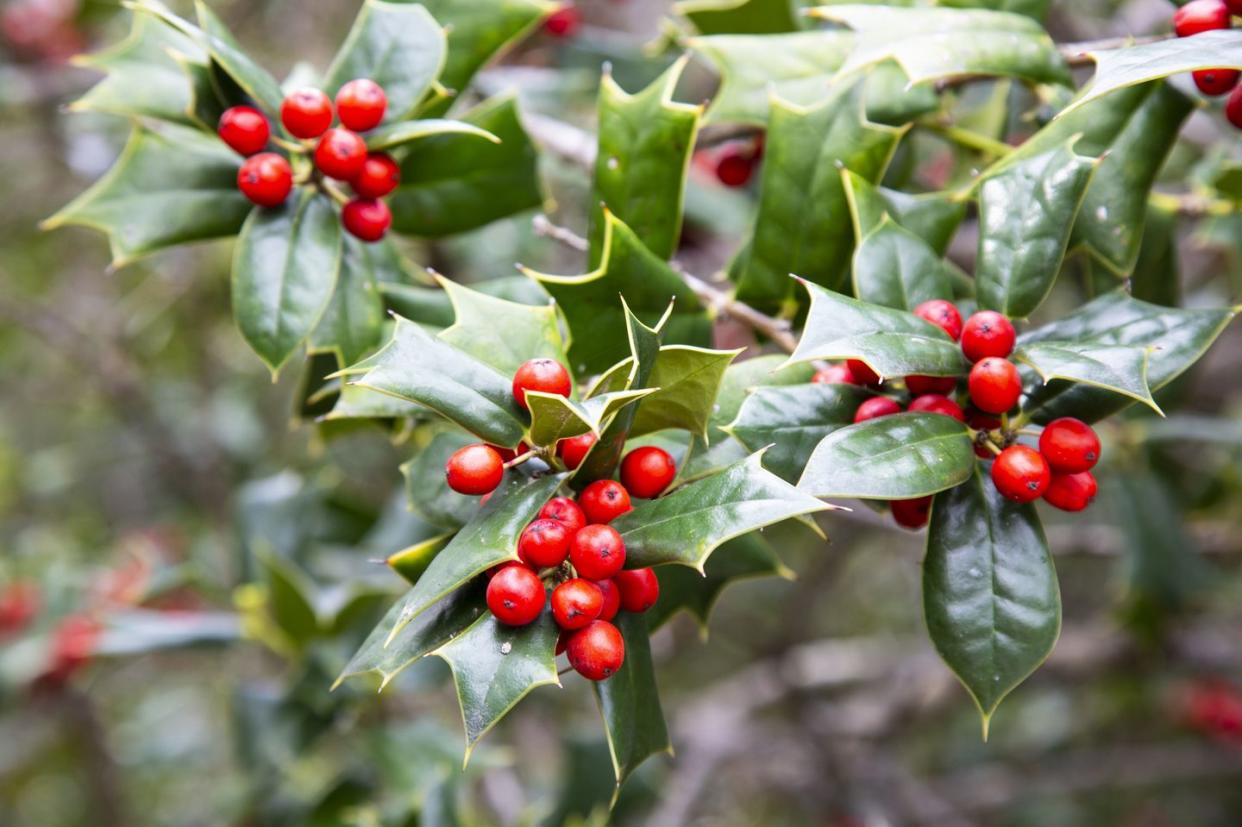
Anise
The flowering plant that produces the captivating spice Star Anise, Anise flowers are small and quaint with their bulbous heads. These flowers are great for breaking up groups of larger flowers, and because of their spicy nature, deer won't like snacking on them.
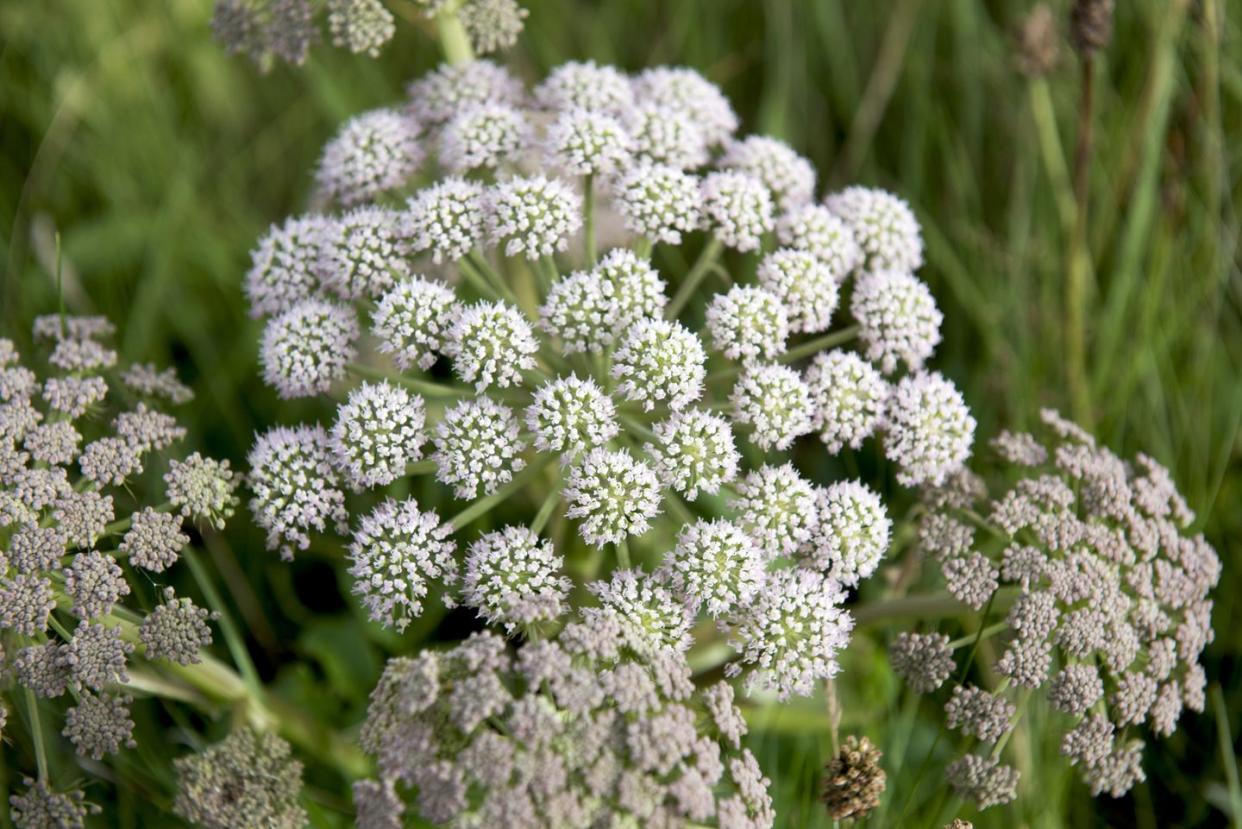
Bleeding Heart
This adorable perennial is not a favorite of deer, so it's a great option for your shade garden. Its heart-shaped blooms appear in early to late spring.

Potentilla
This shrub has a somewhat fuzzy texture that usually doesn't appeal to deer. It comes in white-, pink-, or yellow-flowered varieties and blooms all season long.
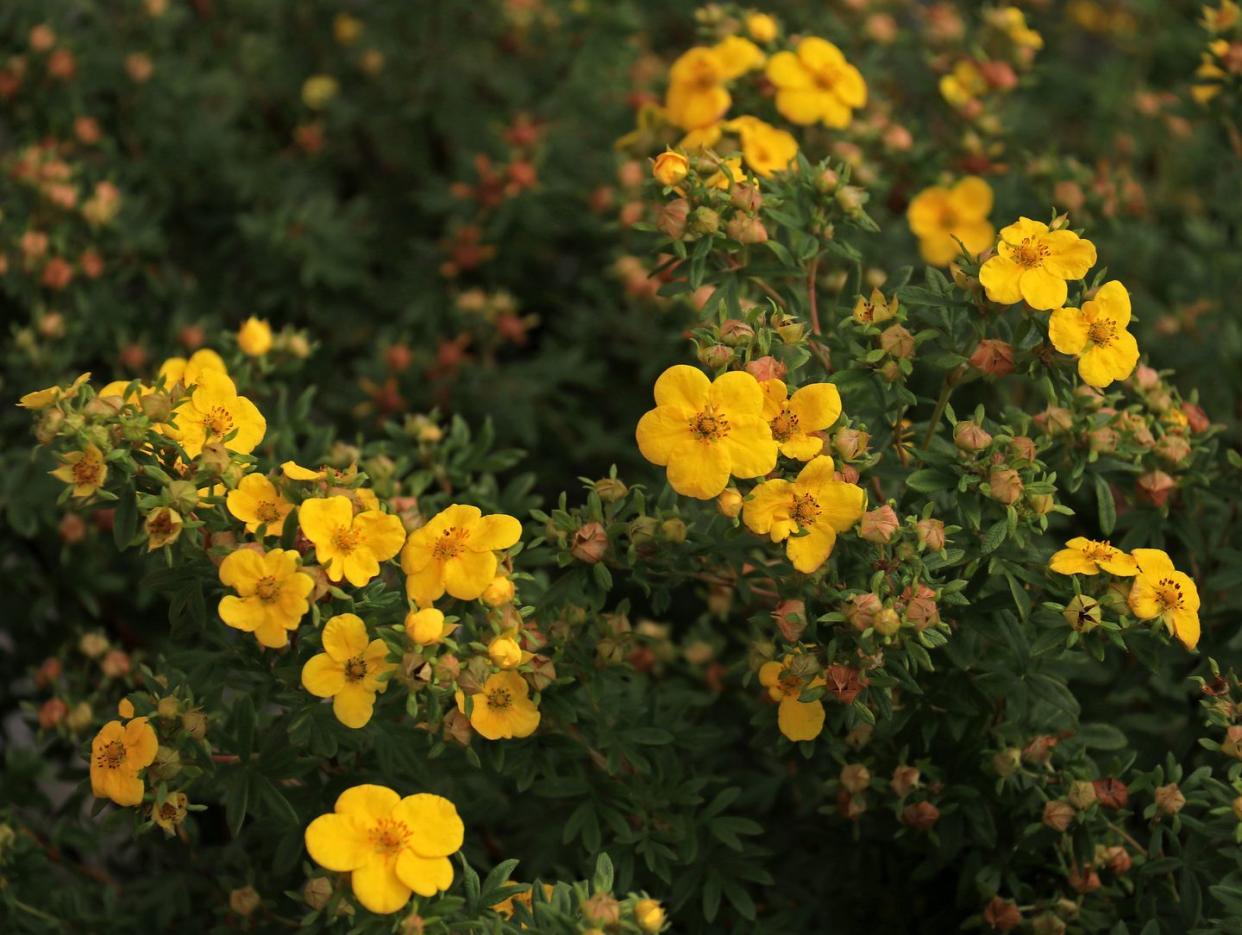
Catmint
This sturdy perennial has silvery-green leaves with a somewhat fuzzy texture. It also has a pungent spicy-minty fragrance that makes most deer avoid it.
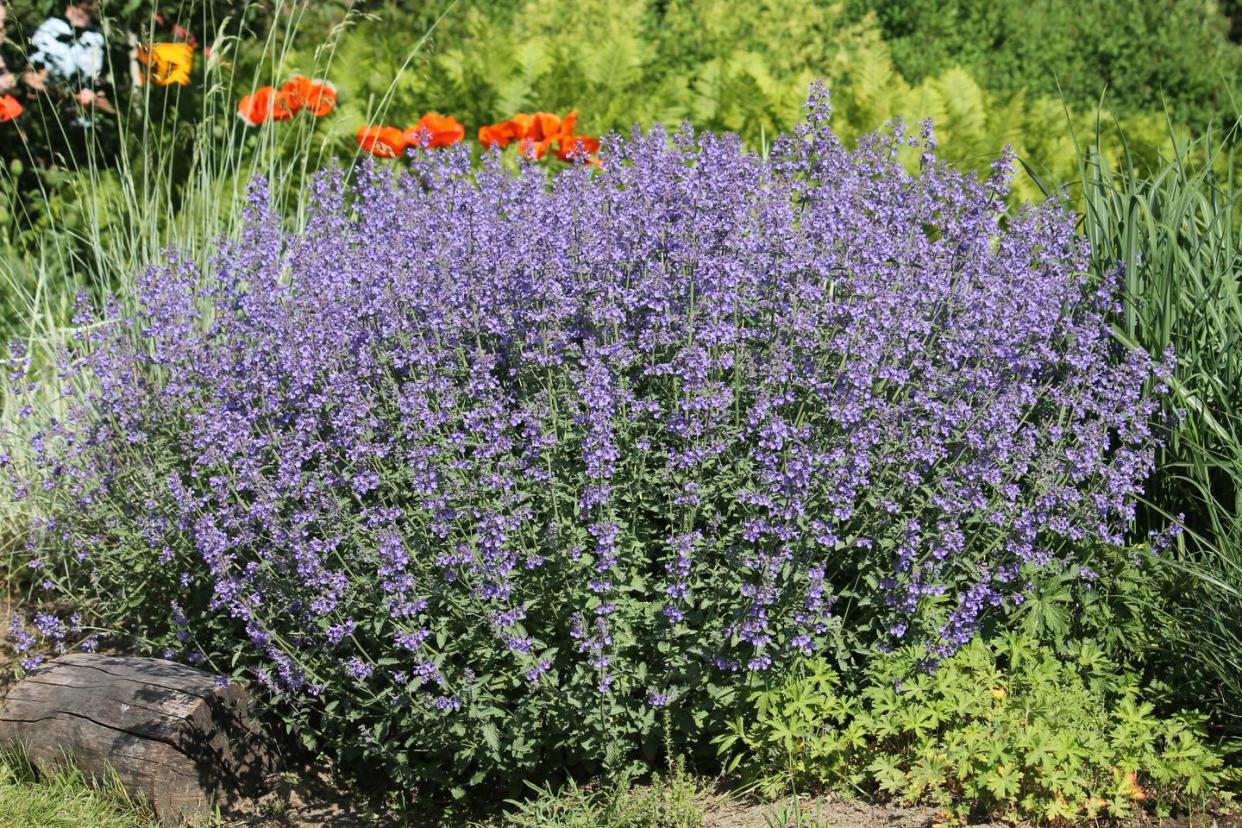
Boxwood
These evergreen shrubs make great foundation plantings, and they're not particularly appealing to deer. You can leave them natural or shear them into shape.

Daphne
Daphne is a beautiful evergreen shrub with glossy green leaves that bloom lovely, fragrant pink flowers from mid-winter to late spring. Its strong scent and toxic berries tend to keep deer away.
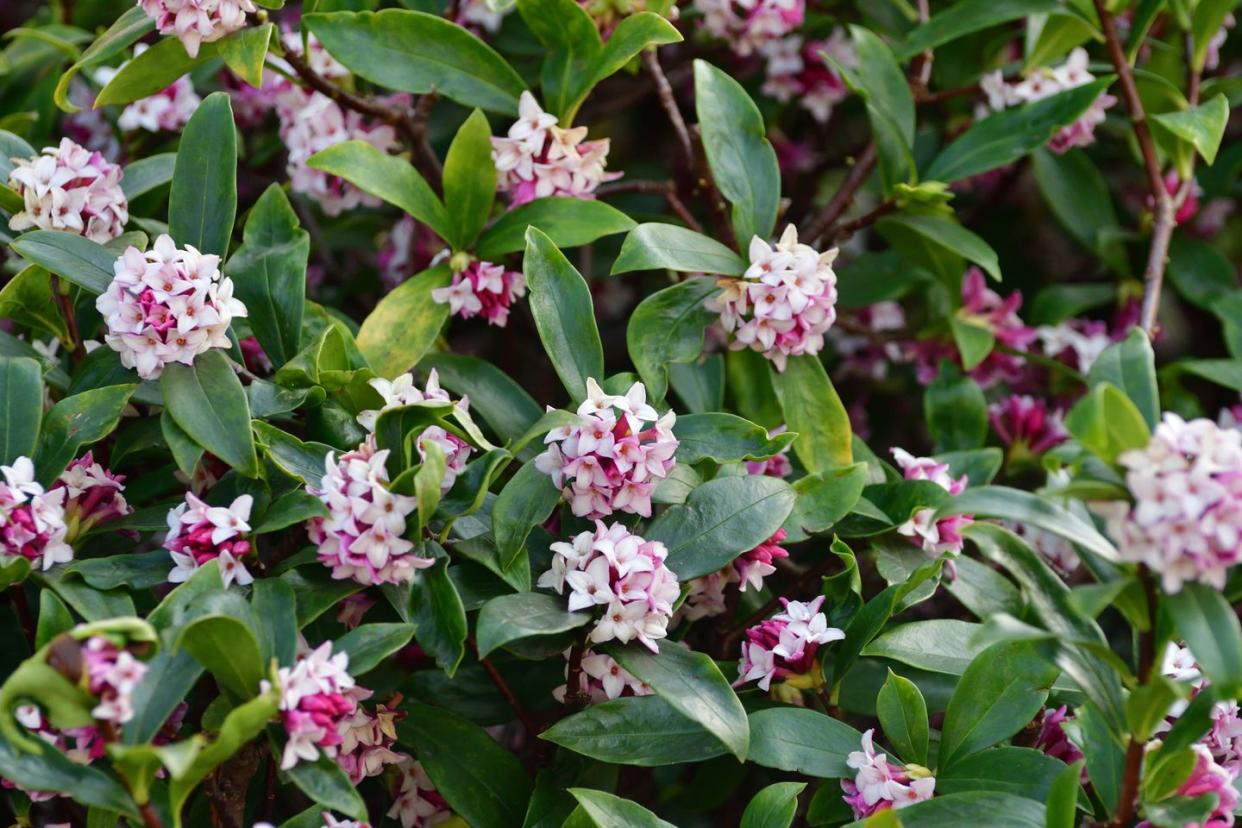
Dusty Miller
This attractive silvery annual makes a stunning accent for containers or beds. Deer don't enjoy its velvety texture.
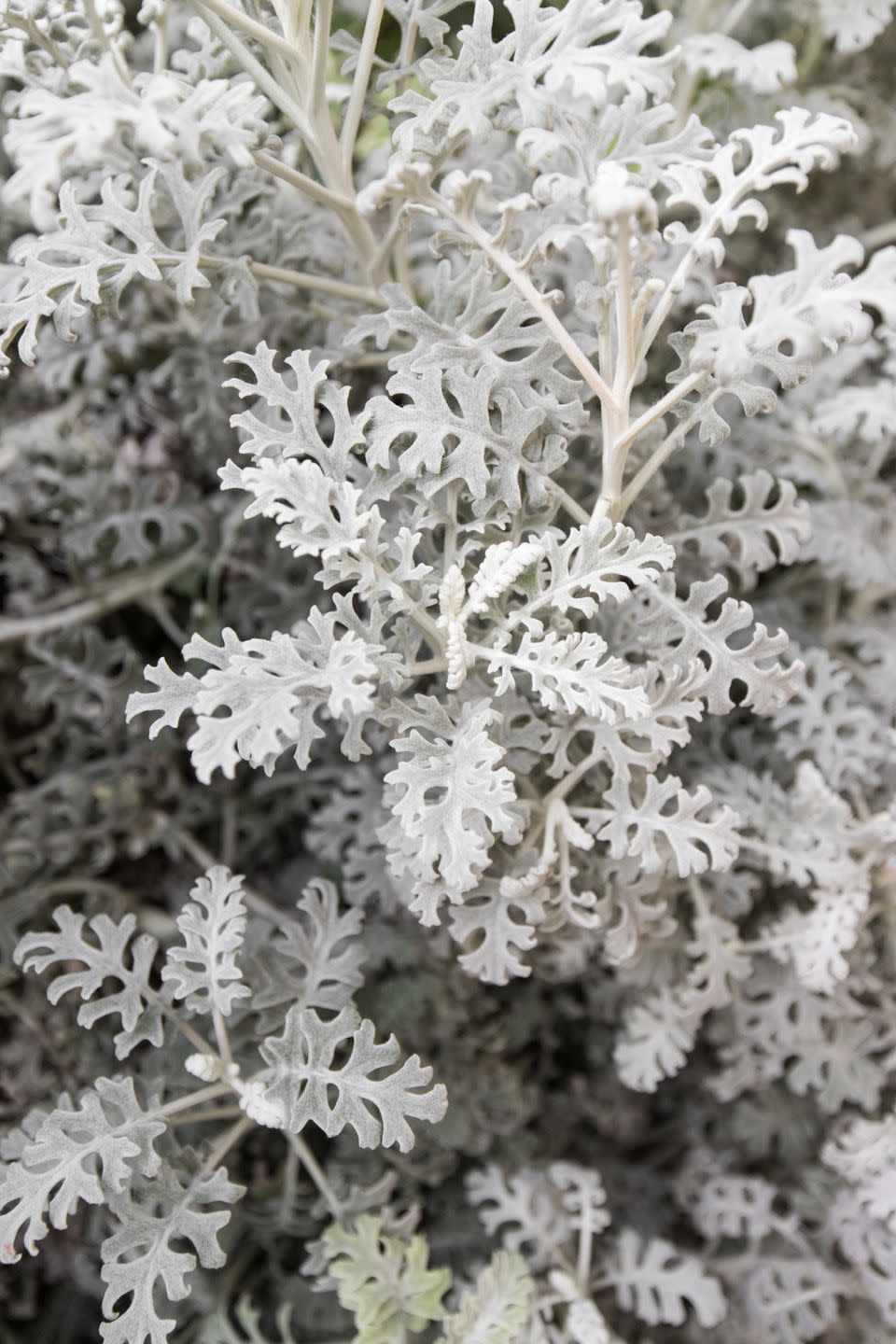
Japanese Forest Grass
This mounding ornamental grass looks amazing when planted in groups—and deer aren't fans of its sharp texture.
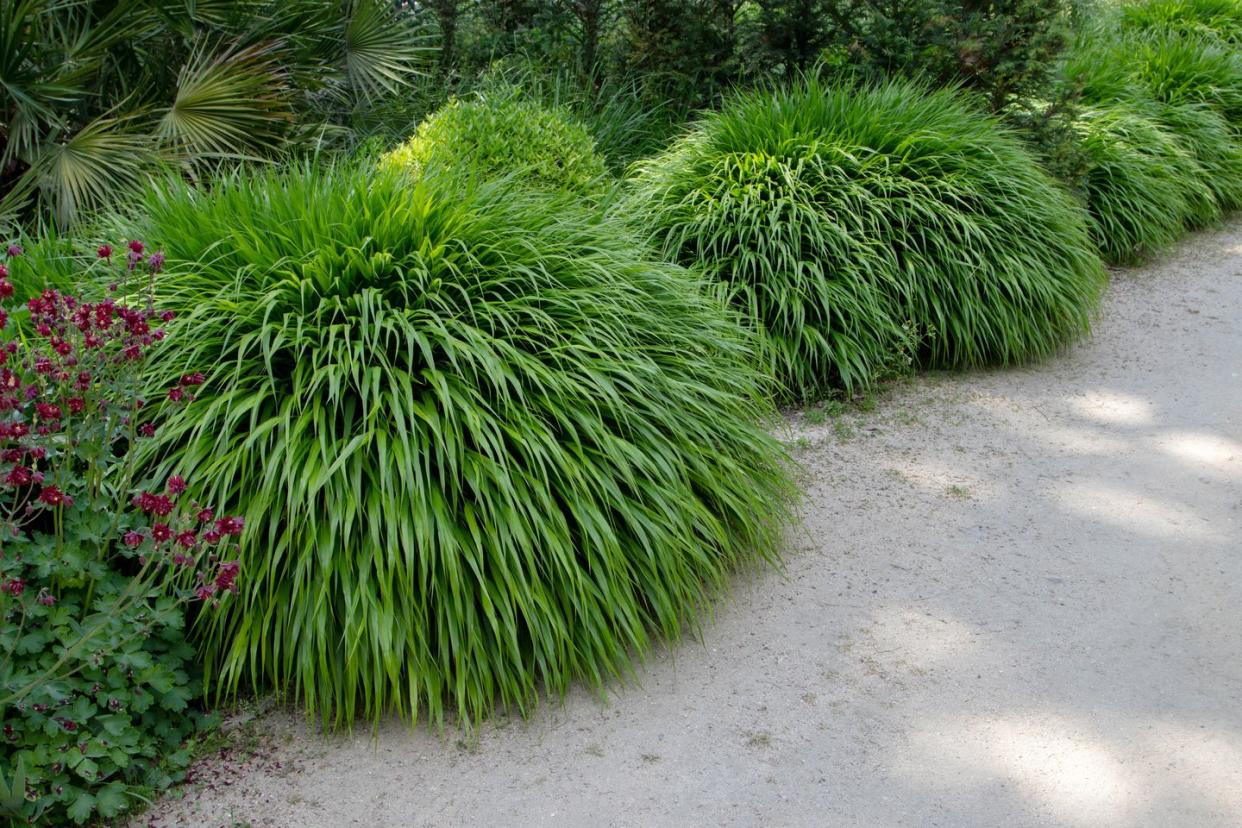
Hellebore
Hellebore, or Lenten rose, is an outstanding perennial for a part-shade garden. With waxy, evergreen foliage and exquisite blooms during late winter into early spring (around the time of Lent), this is a must-have for any garden that deer visit.
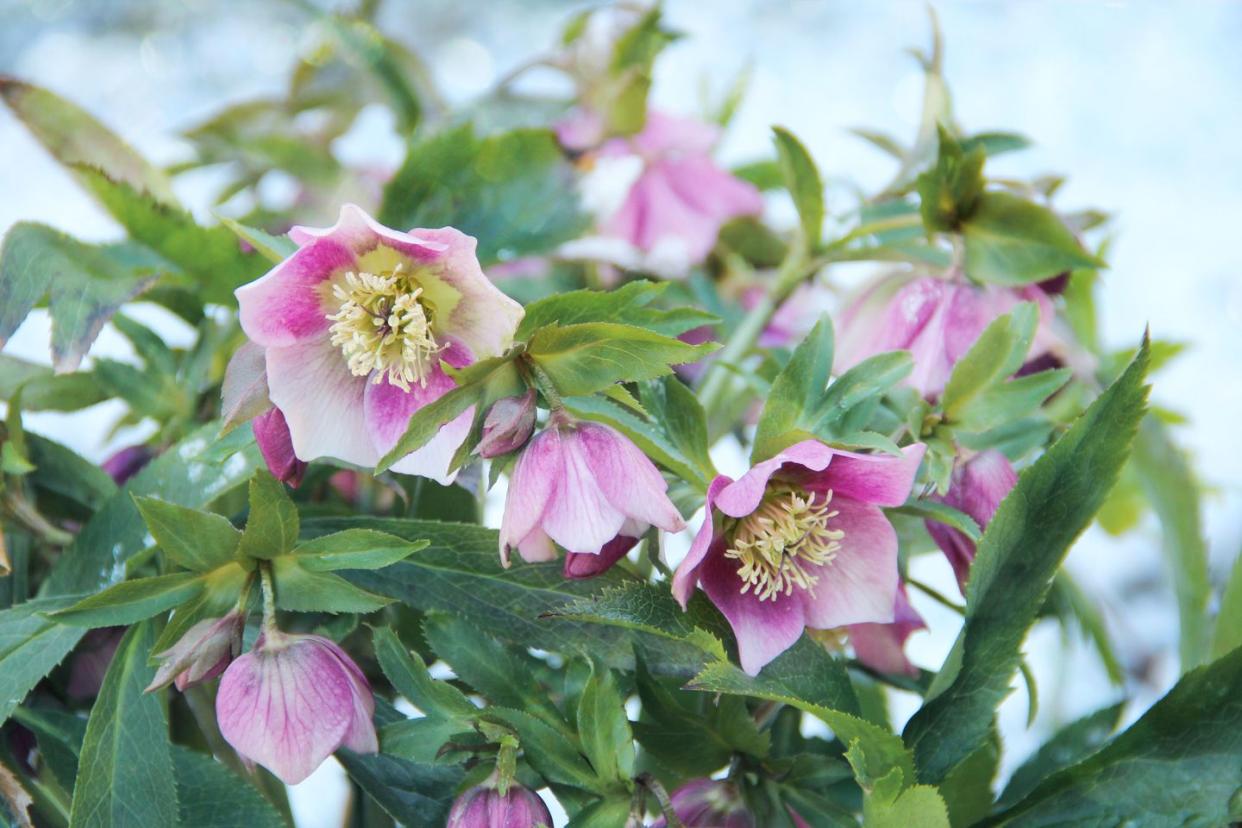
Allium
Alliums, or ornamental onions, have pretty, round flowers atop long stems in late spring. (Plant the bulbs in fall for spring flowers.) Their onion-y scent keeps deer at bay.
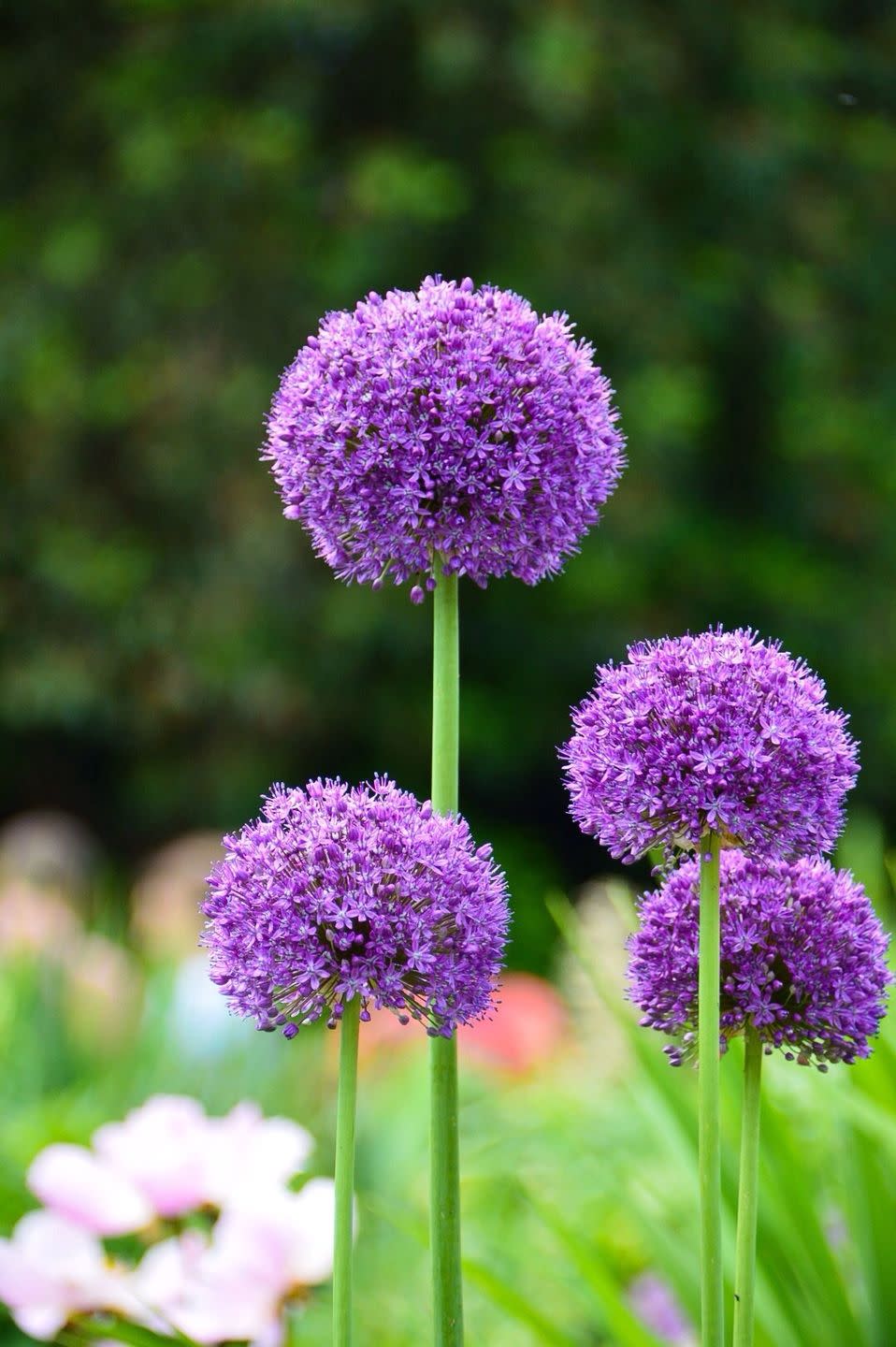
Rosemary
Like many other pungent garden herbs, rosemary—which is grown as an annual but is a perennial in warm climates—is too strongly scented for deer to nibble. This is a great culinary herb, but it also has pretty purple blooms once the plant matures in warmer parts of the country.
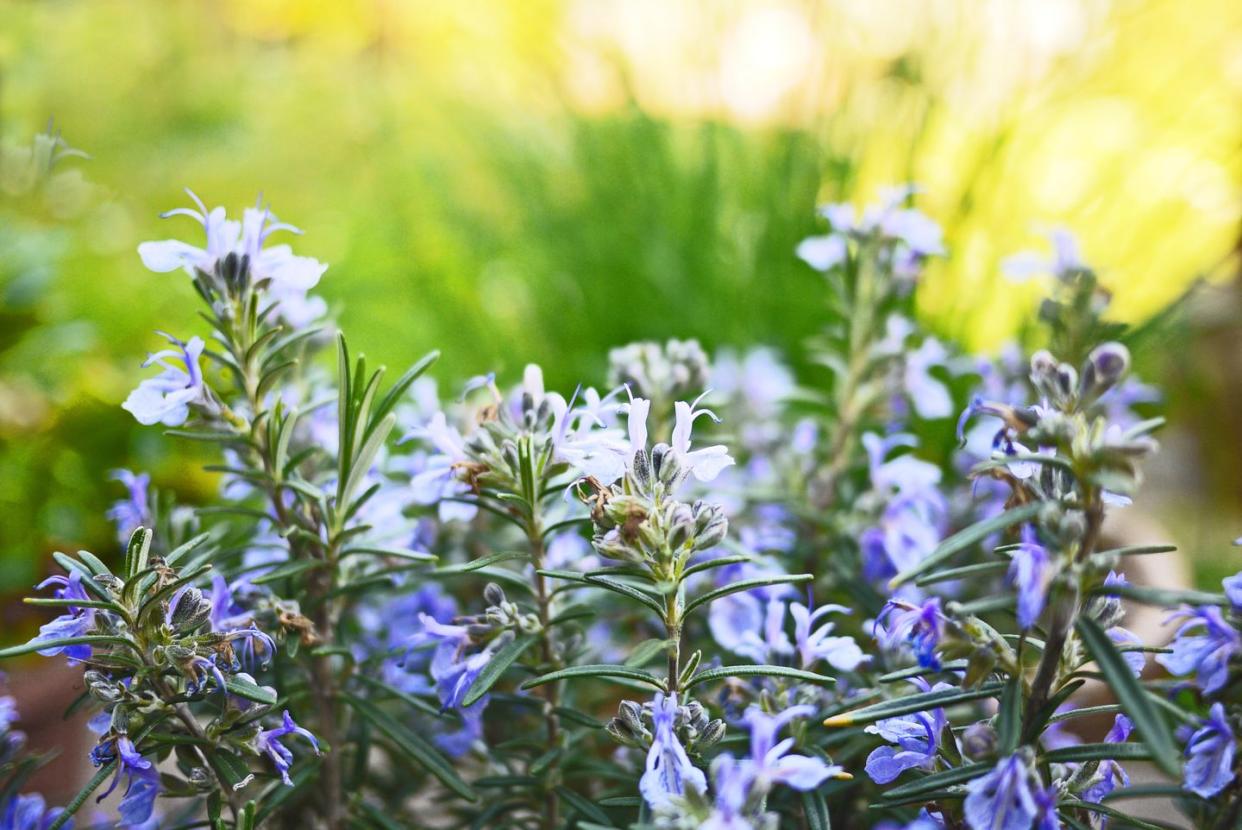
Sweet Alyssum
This low-growing annual comes in white, pink, or purple—and its sweet scent is not appealing to deer. It blooms from spring to frost and looks great in mixed planters, or as an edging plant.

Winter Aconite
If you're tired of gloom in late winter, these cute little flowers are the answer. (Plant the bulbs in fall for spring flowers.) Winter aconite pops up when there's still snow on the ground, and deer don't like the bright yellow blooms.
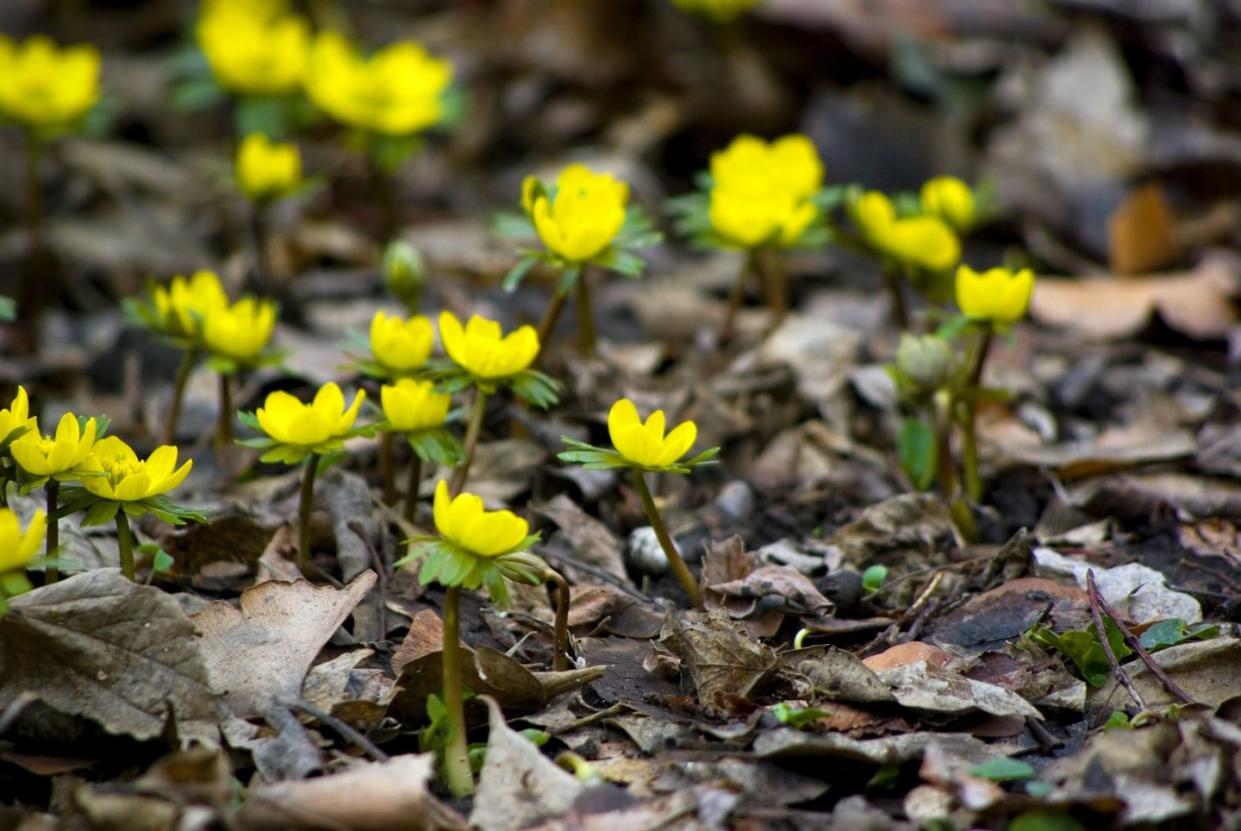
Snapdragon
The lovely spikes of these annuals come in every shade from pale pink to deep red. They're amazing in planters and borders, and deer tend to avoid their ruffled blooms.
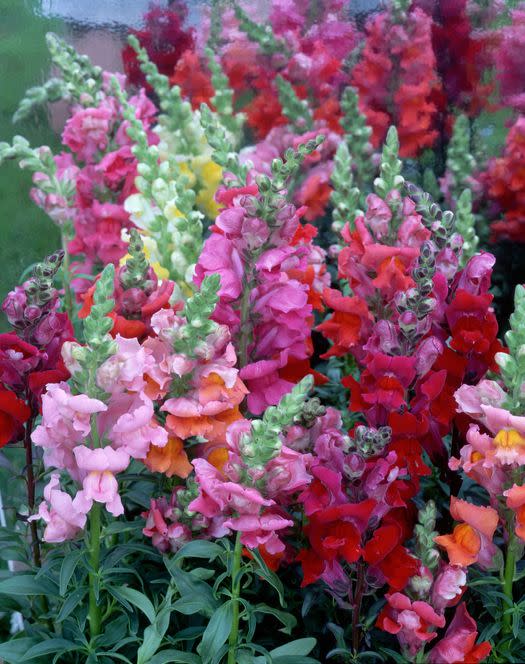
Calendula
This handsome annual is easy to grow from seed, and it blooms all season long until a hard frost. The bitter taste of these cheerful flowers keeps deer away.

Japanese Painted Fern
If you're looking for a handsome shade garden option, this pretty fern unfurls in shades of purple and green. It's a sturdy perennial plant that deer typically avoid due to its unpalatable texture.
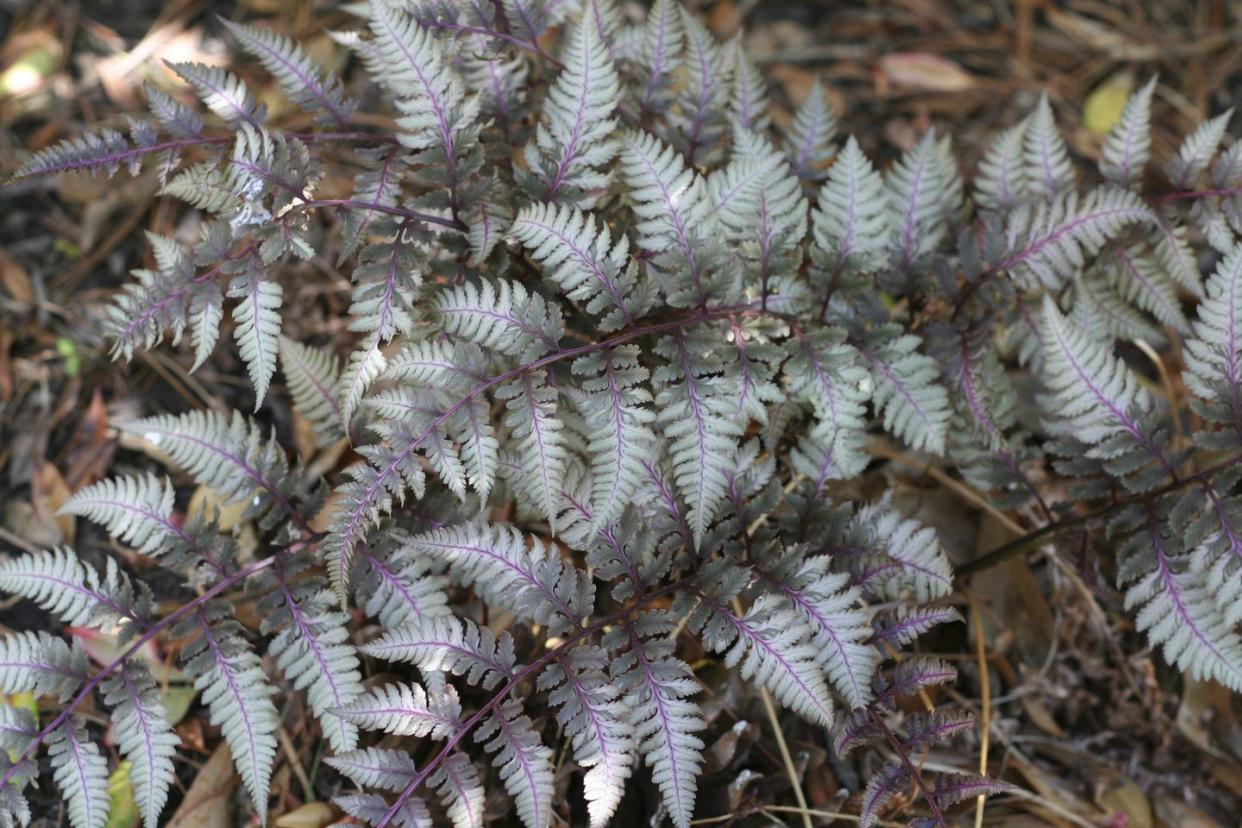
Lily of the Valley
These bell-shaped white flowers are beautiful, but plant them somewhere they can be contained—such as up against a sidewalk— because they can become invasive if given free rein. They're toxic, which deters deer.
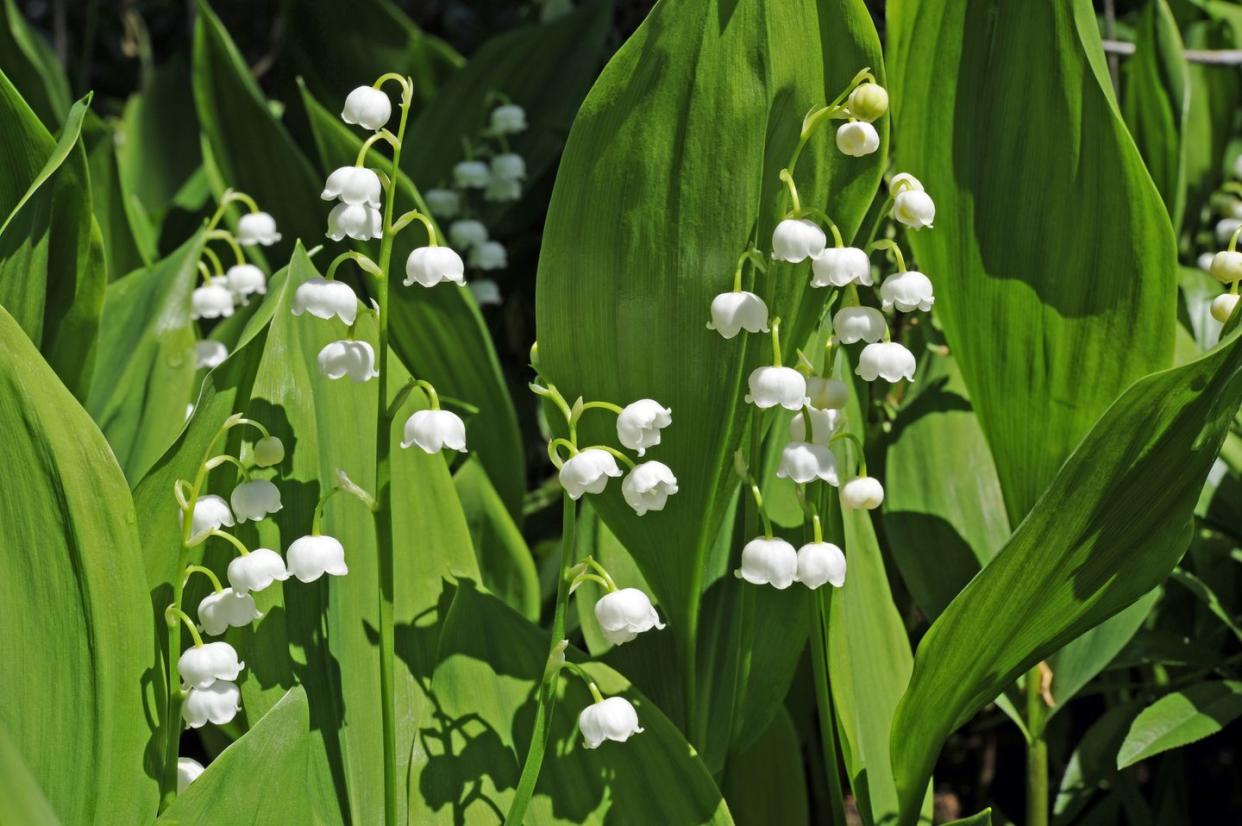
Butterfly Bush
Butterfly bush blooms all season long, from early summer to fall. It attracts bees and butterflies, of course, but it doesn't attract deer—and new hybrids are not invasive.
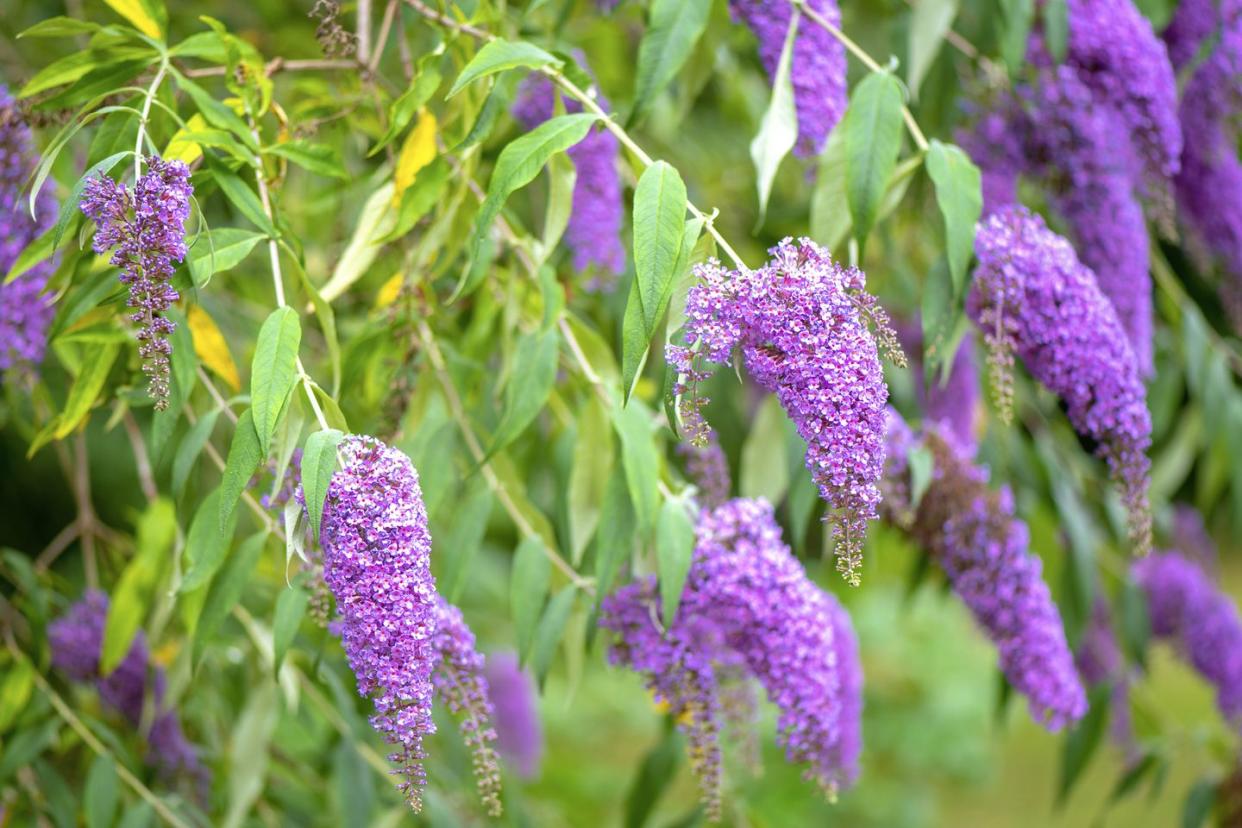
Aster
Asters are a great addition to the late fall garden, often blooming when everything else has already faded. Deer don't like their texture, but beware that rabbits do!
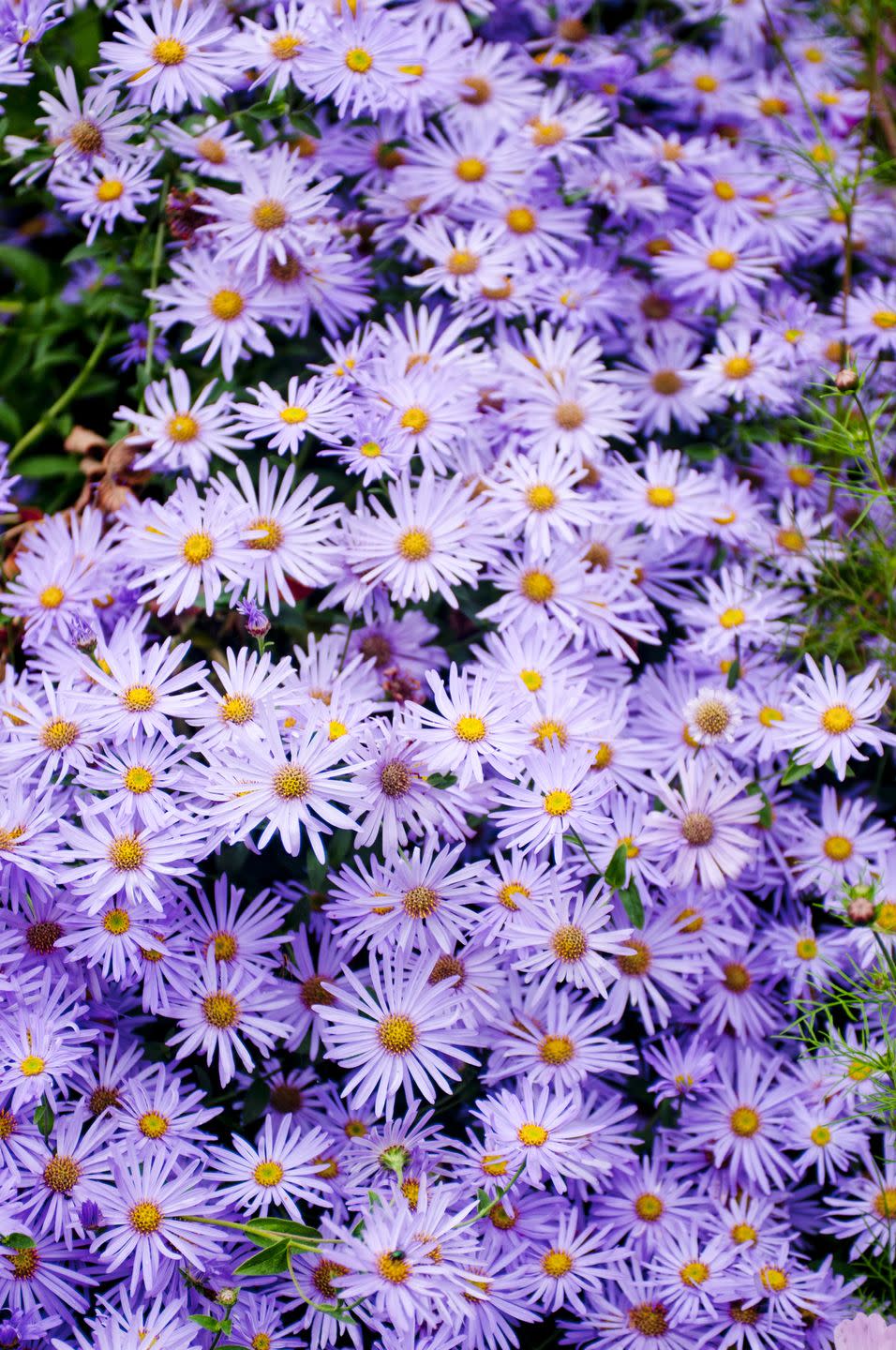
Foxglove
These tall cottage garden favorites look smashing at the back of borders. They're a short-lived perennial, but they're well worth planting because deer avoid these toxic plants.
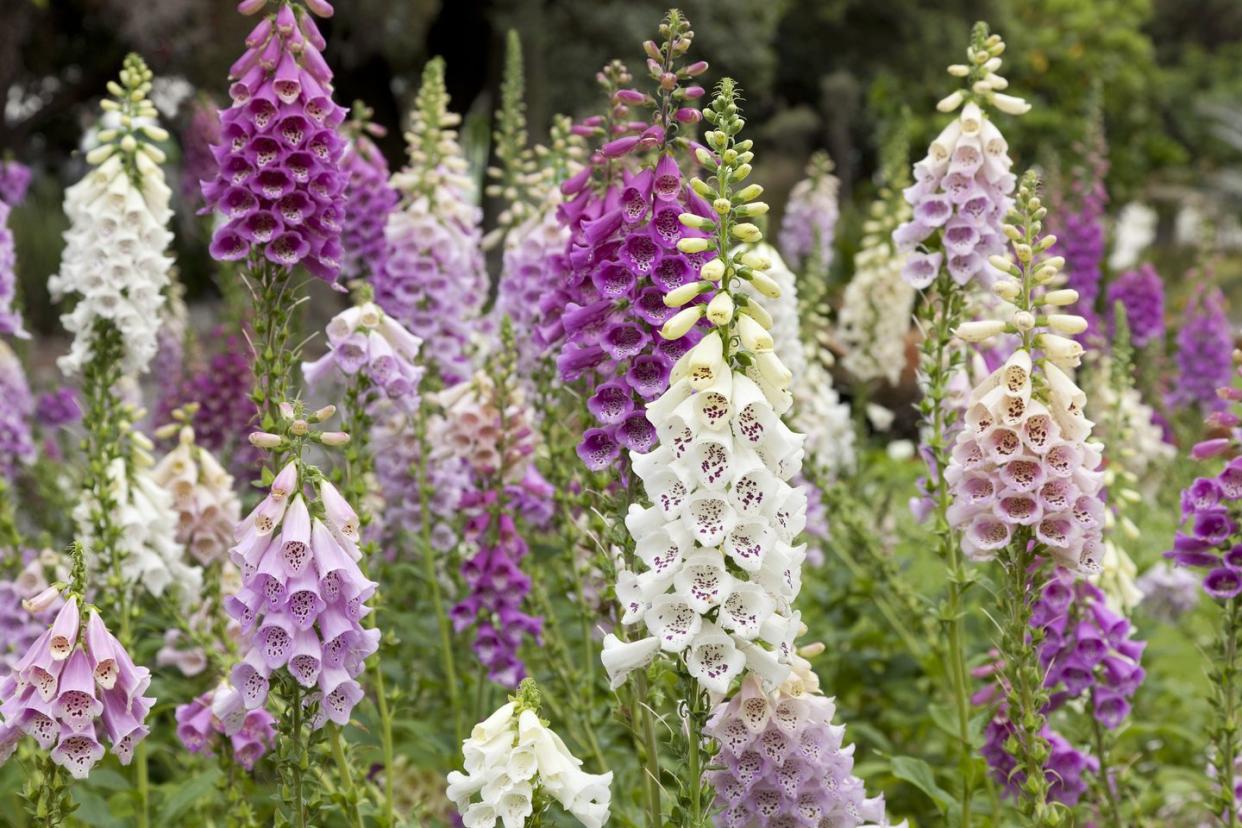
Heliotrope
This old-fashioned favorite is a delightful annual for containers so you can enjoy the scent. Deer don't enjoy the fragrance or the sandpaper-like texture of its foliage.
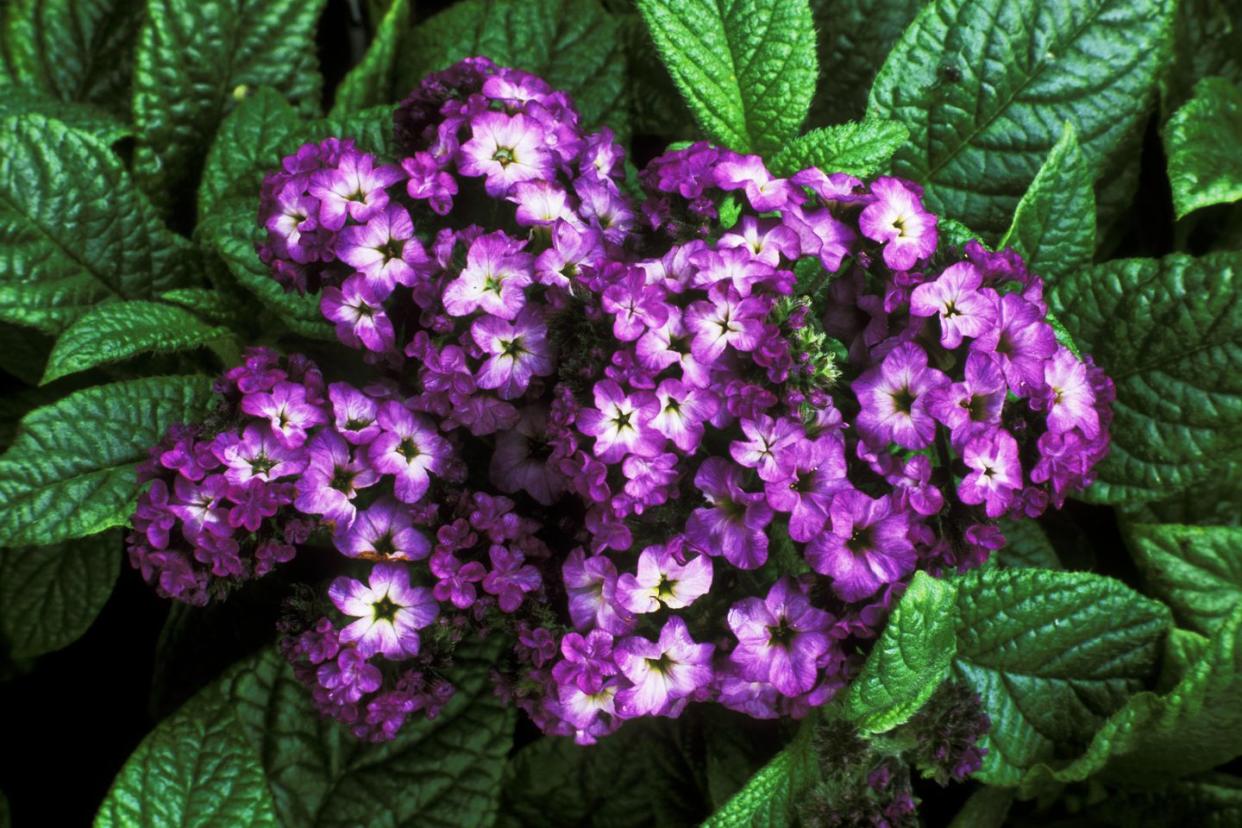
Daffodil
You know it's spring when the daffodils appear! (Plant the bulbs in fall for spring flowers.) These cheerful flowers are toxic, so deer won't touch them.
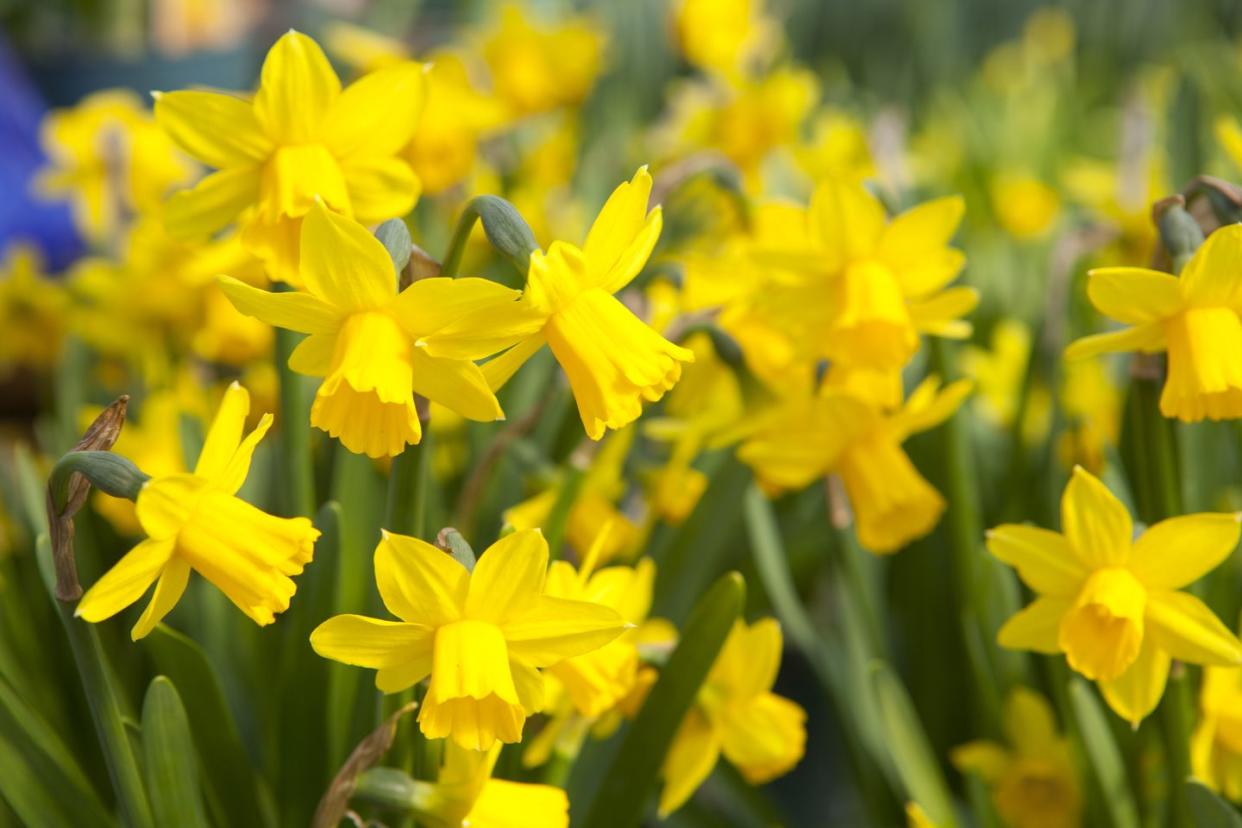
Lavender
Lavender is a beautiful perennial with silvery foliage and strongly-scented purple flower spikes. It makes a lovely cut or dried flower too, and deer steer clear of its potent scent.
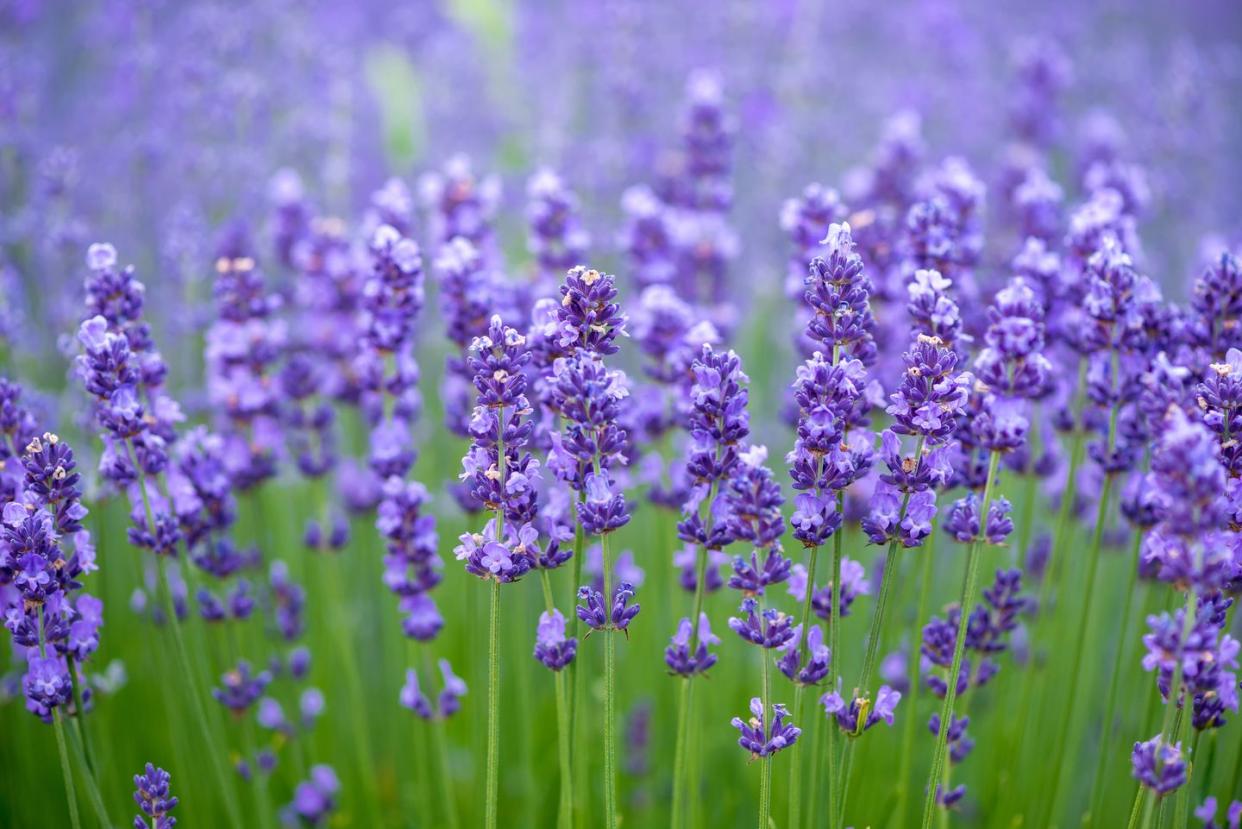
Zinnia
These reliable annuals come in every color imaginable. Their sturdy blooms attract tons of pollinators, but deer don't appreciate the texture of their leaves.
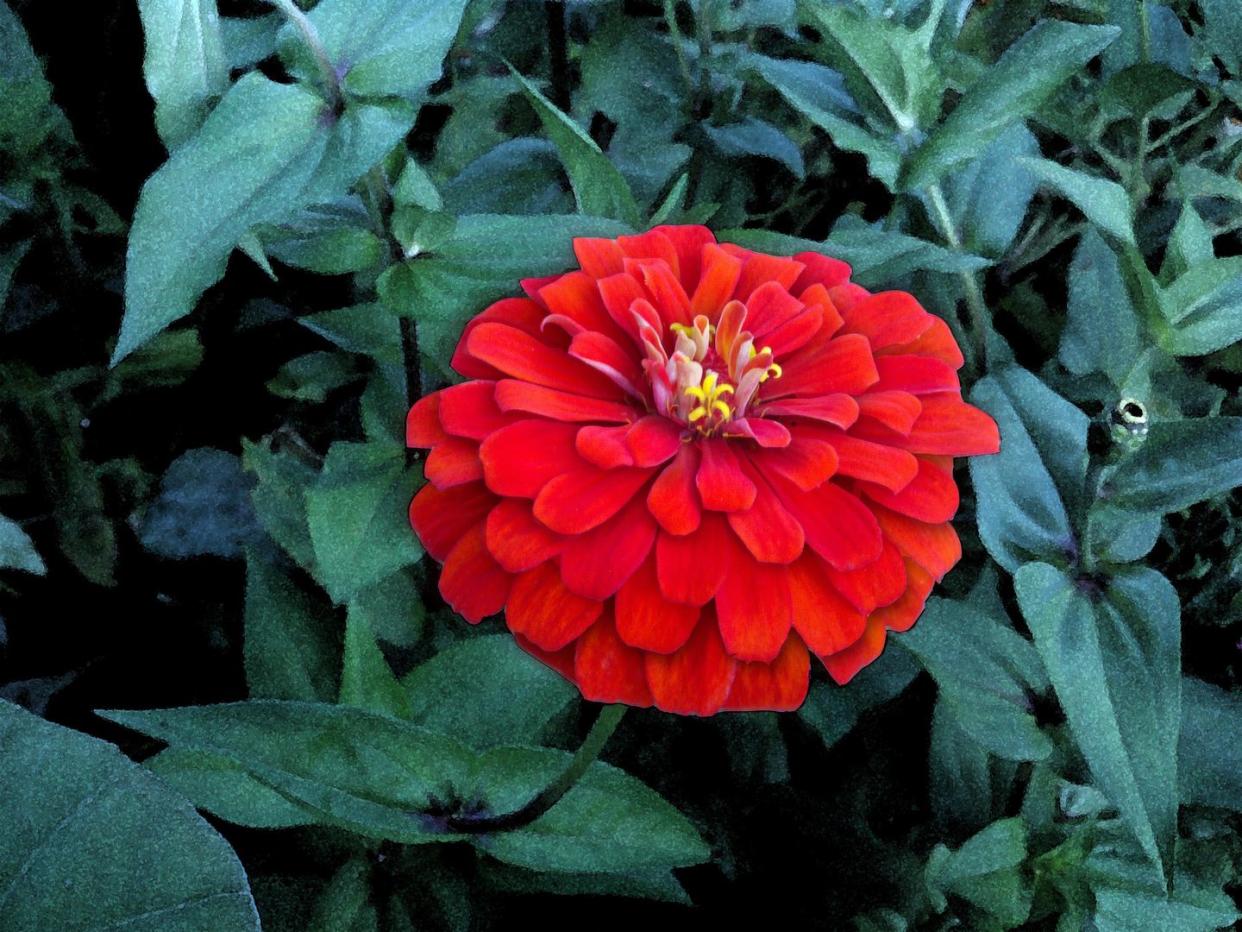
Peony
Peonies are gorgeous perennials that can live for decades. Their strong fragrance is a deterrent to munching deer.
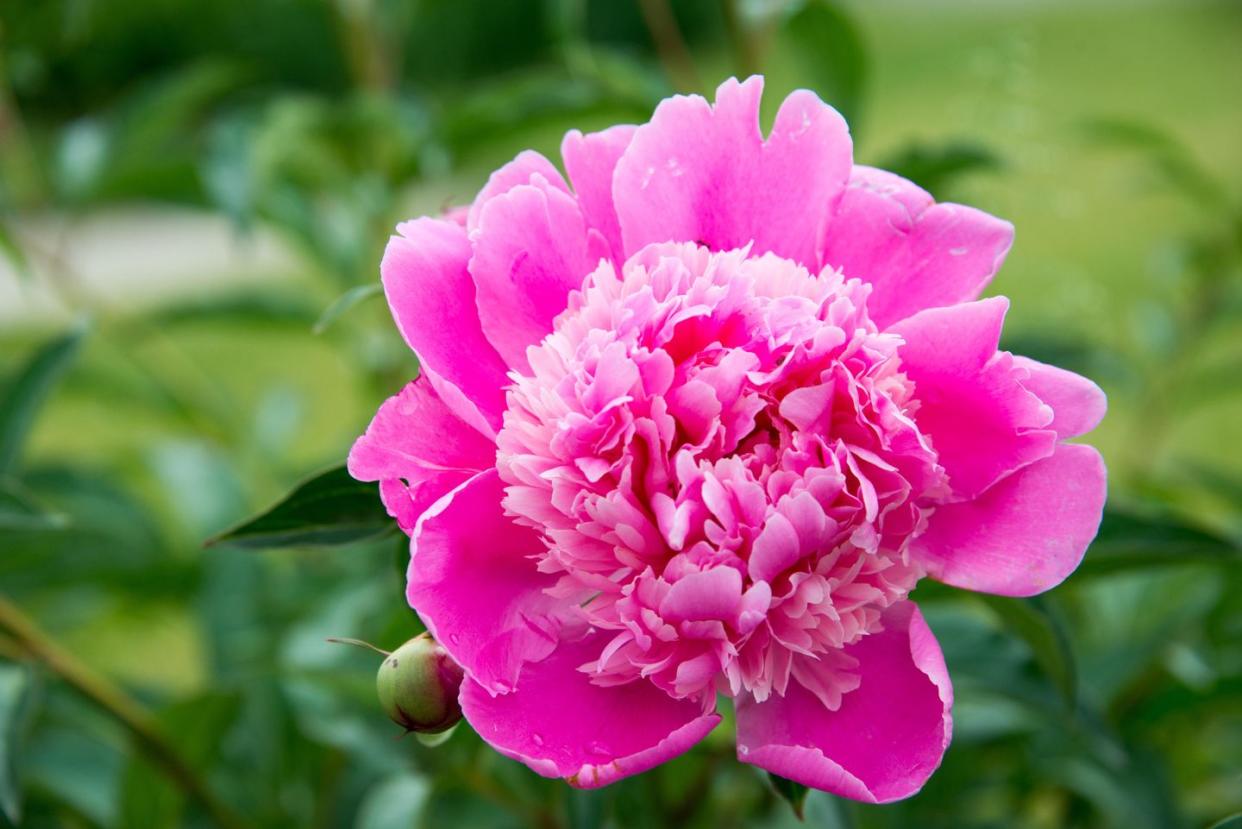
Salvia
These handsome perennials have mounds of silvery-green foliage topped with beautiful purple spikes. Their strong scent keeps deer away.
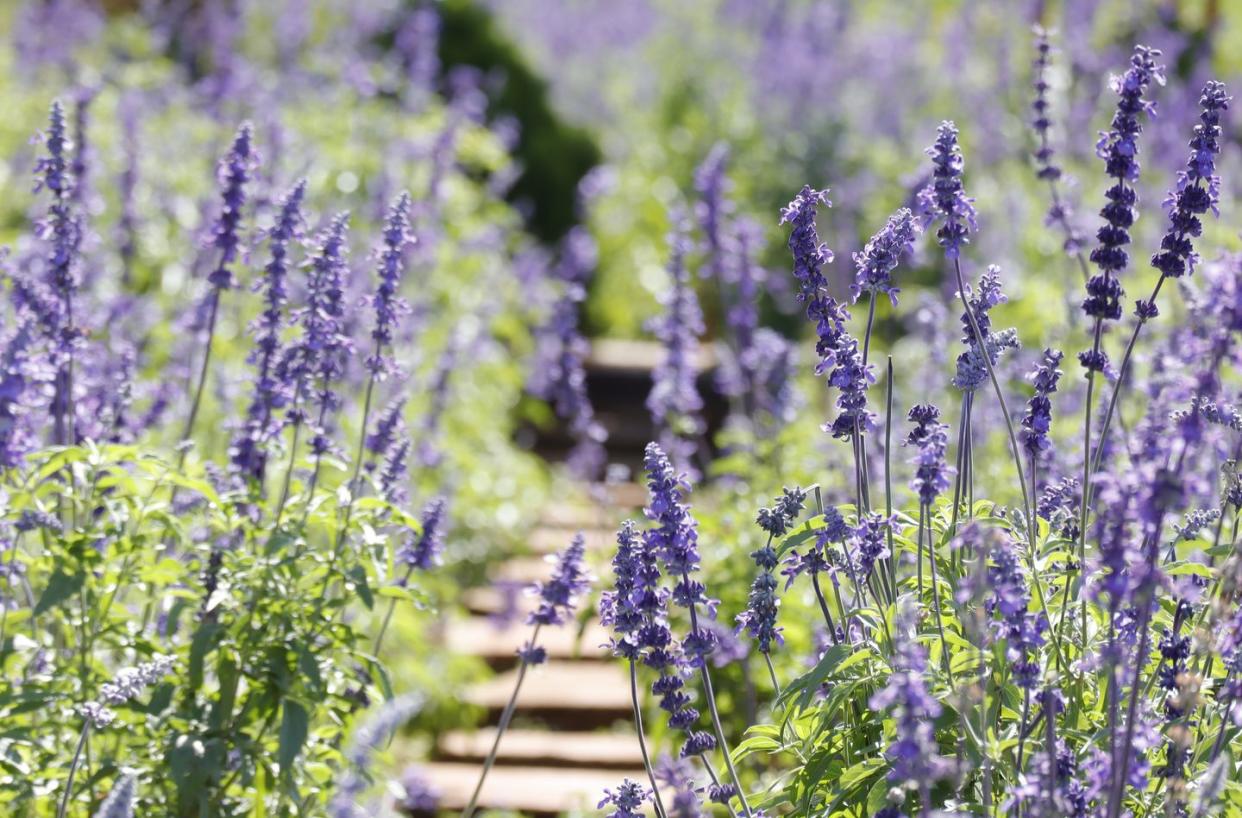
Lamb's Ear
This ground cover plant has a touchable texture and spikes of flowers in mid-summer—but the velvety-soft feel of these leaves is not appetizing to deer.
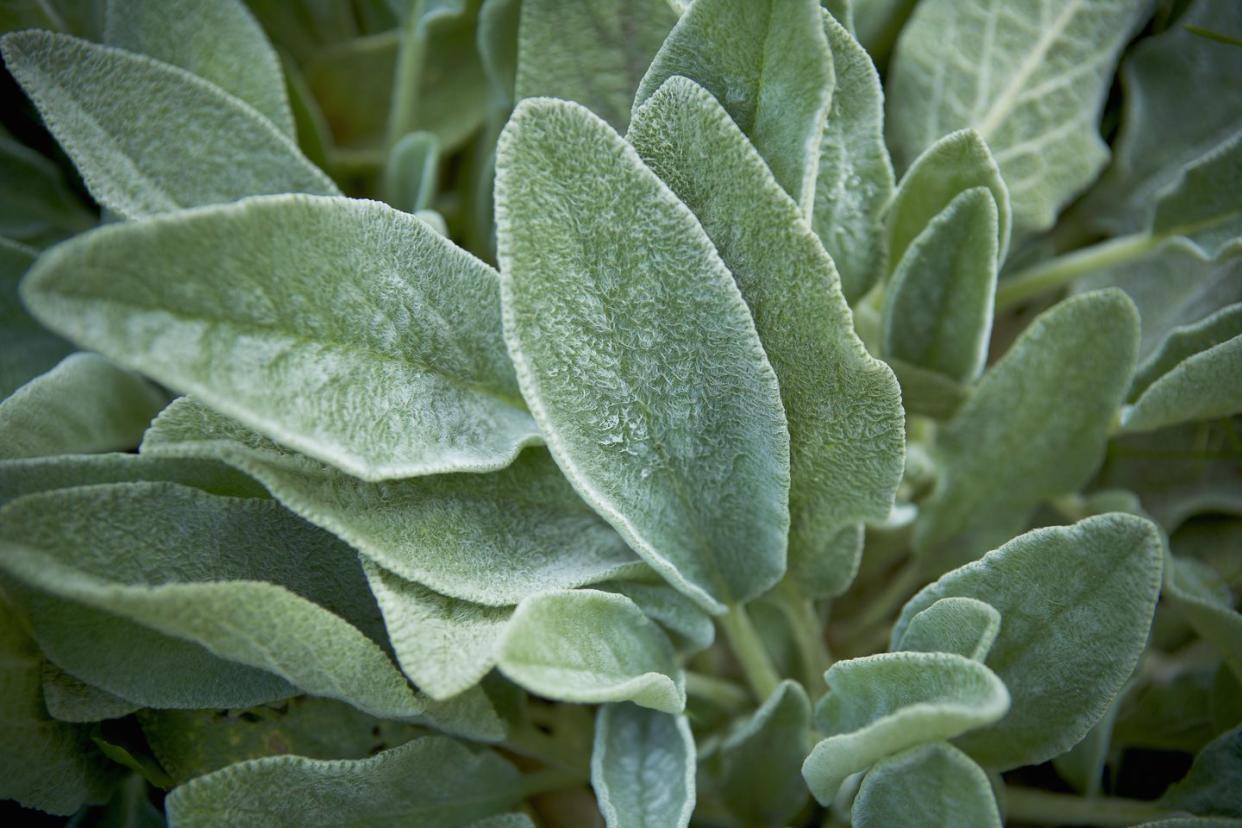
Iris
Irises come in an array of colors and heights, and they're truly low-maintenance perennials. Deer tend to leave them alone because of their texture and light scent.
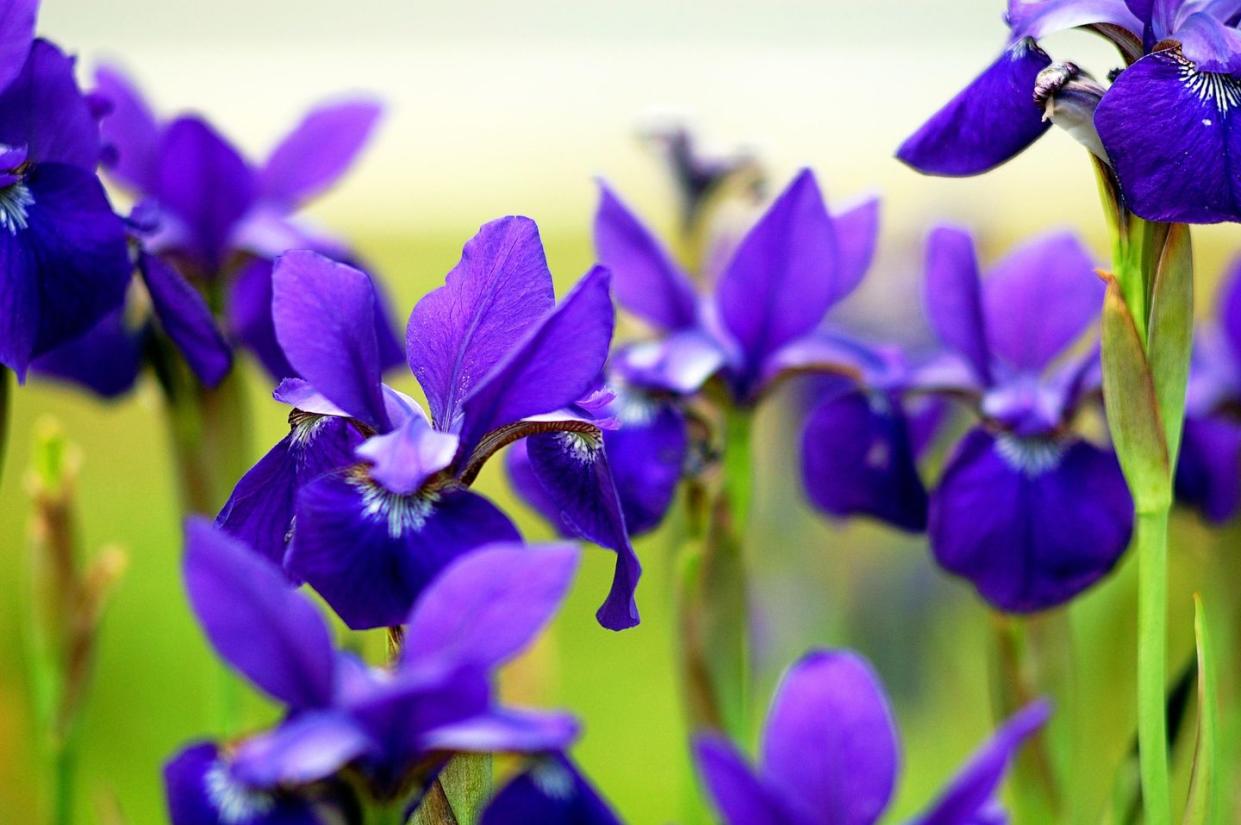
Coneflower
Also called echinacea, coneflowers are sturdy perennials that thrive in a variety of garden soils. They come in an amazing array of colors, including pink, white, cream, orange, and every shade in between. Deer say "no thank you" to the texture.
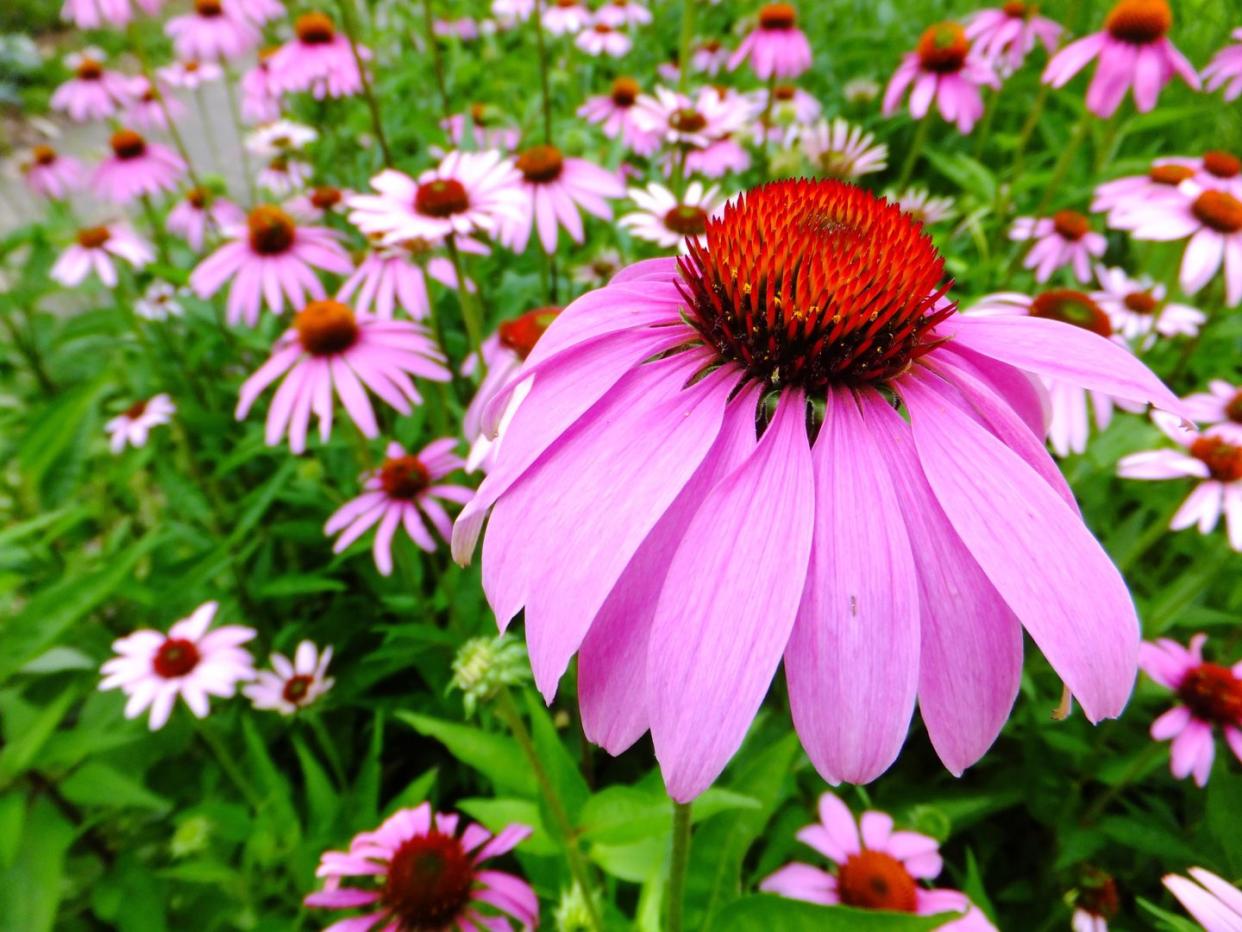
Oriental Poppies
These perennial types of poppies have beautiful papery blooms atop long, graceful stems. Deer avoid them due to their toxicity.
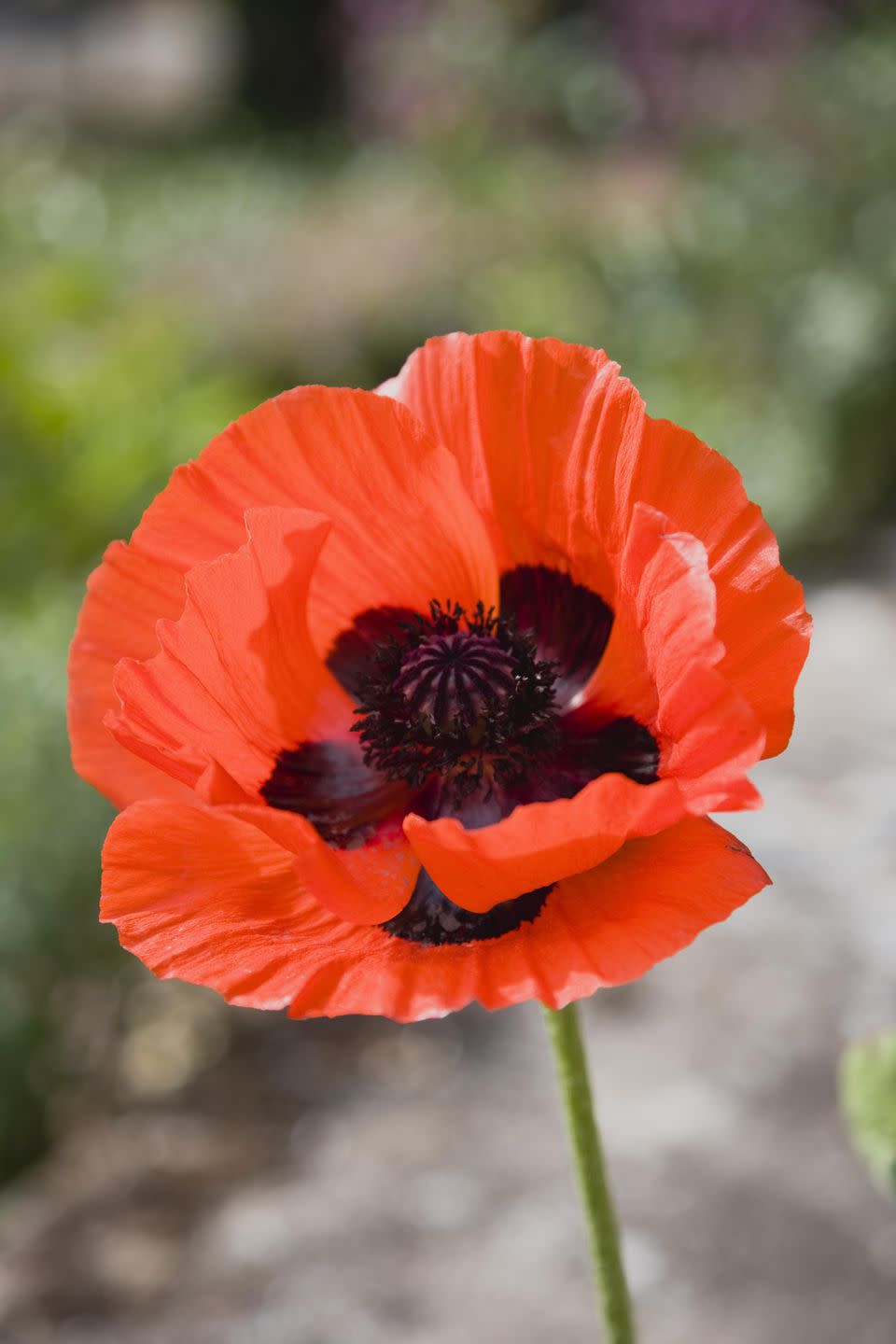
You Might Also Like
